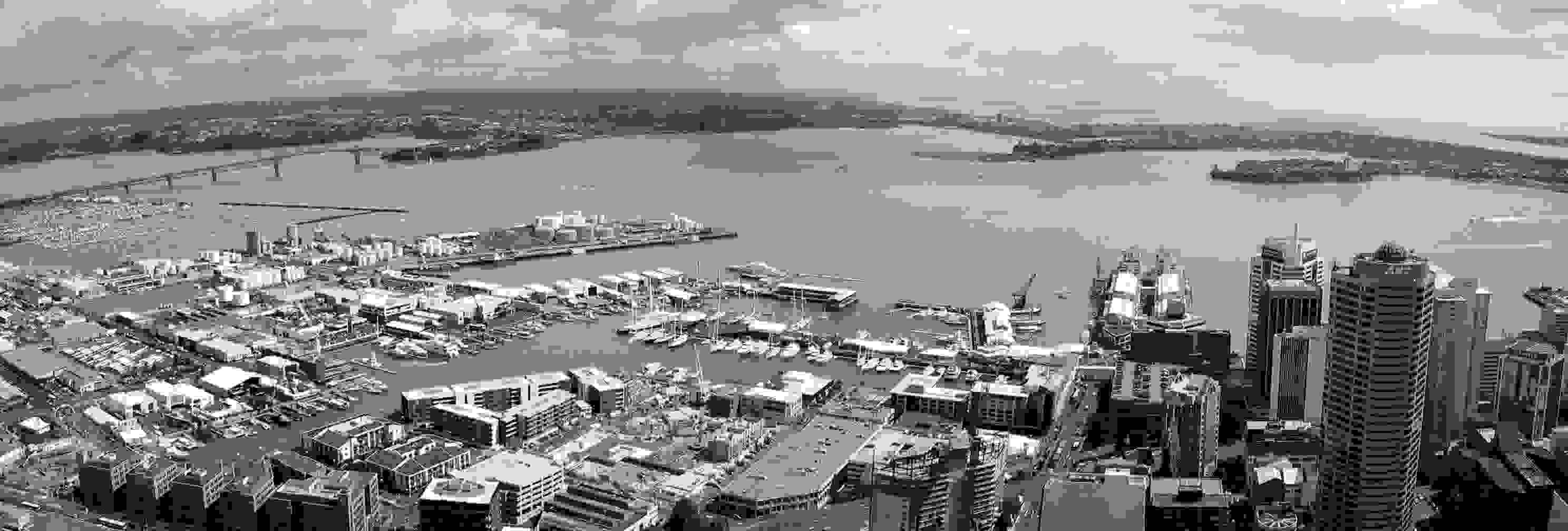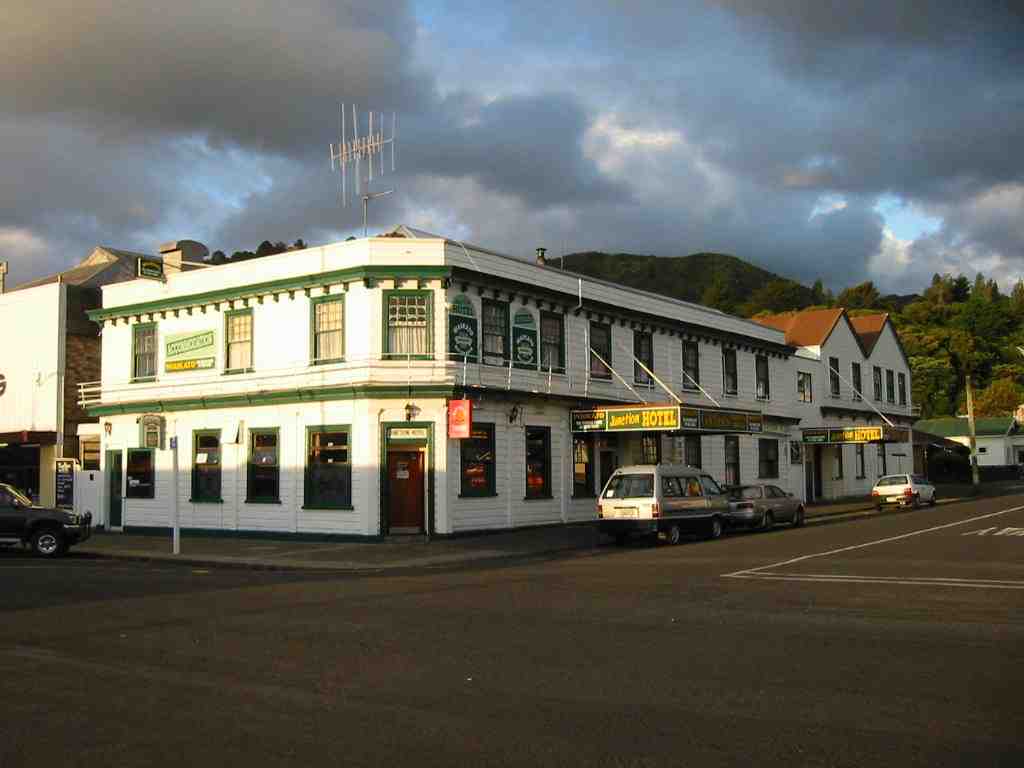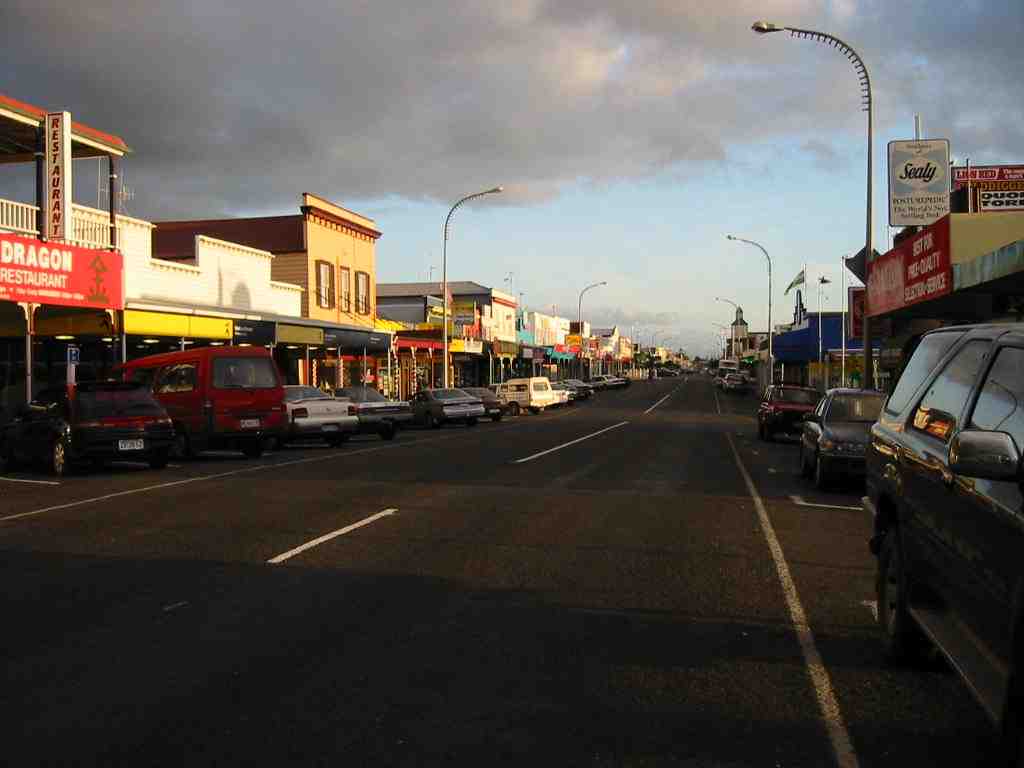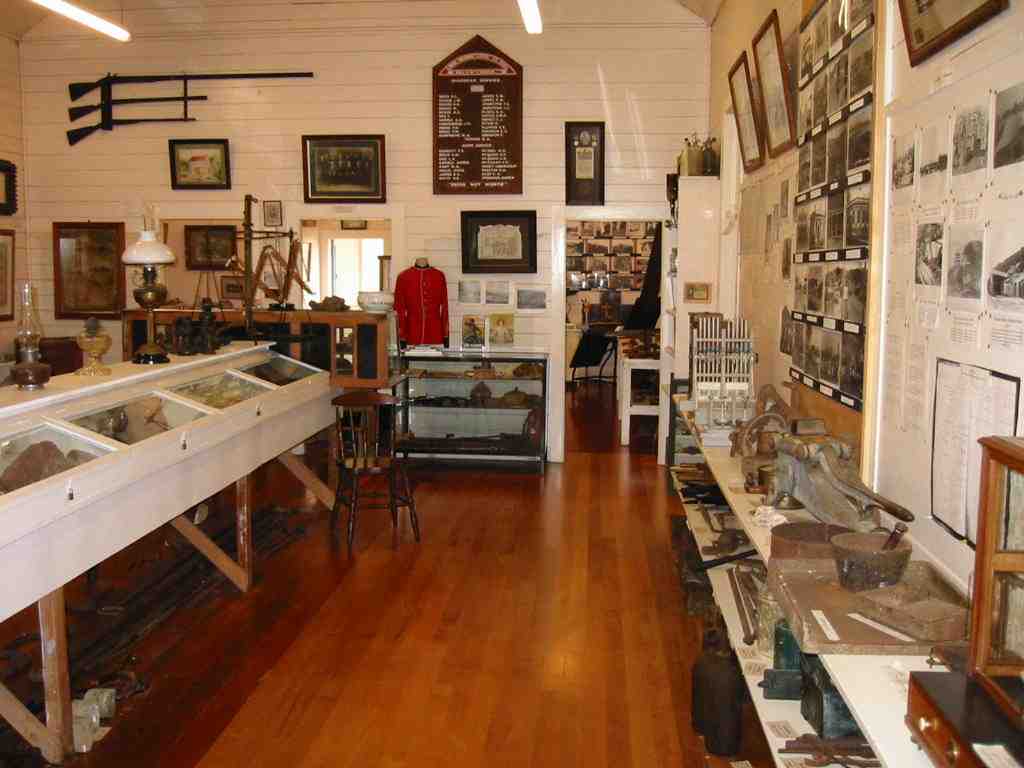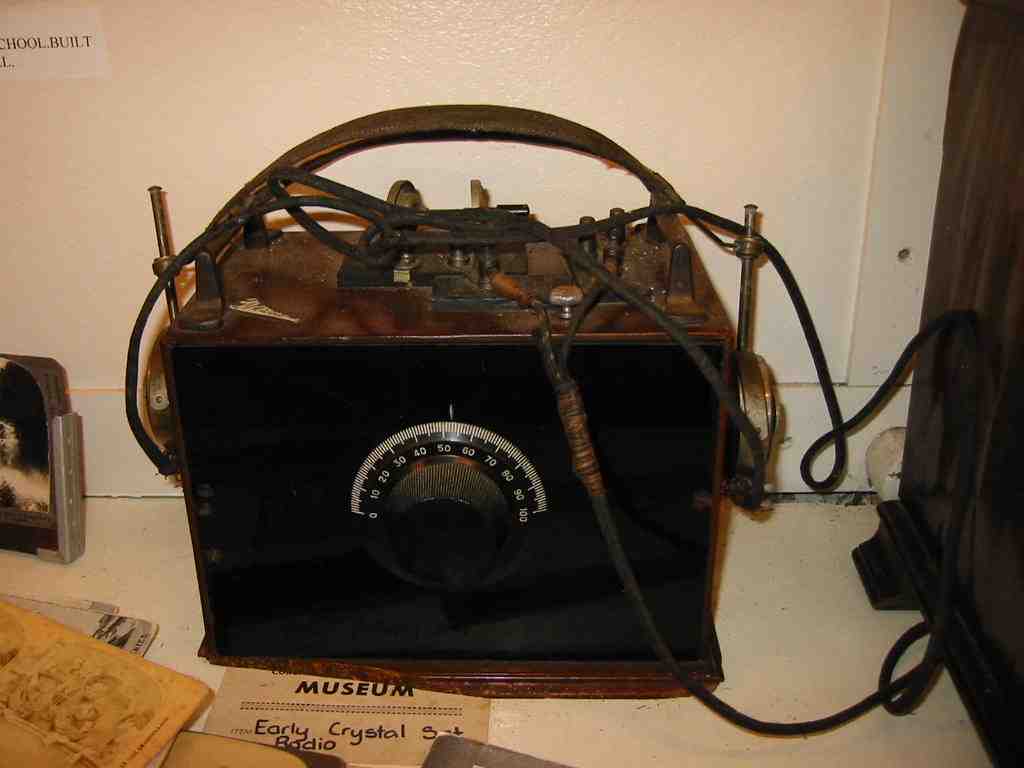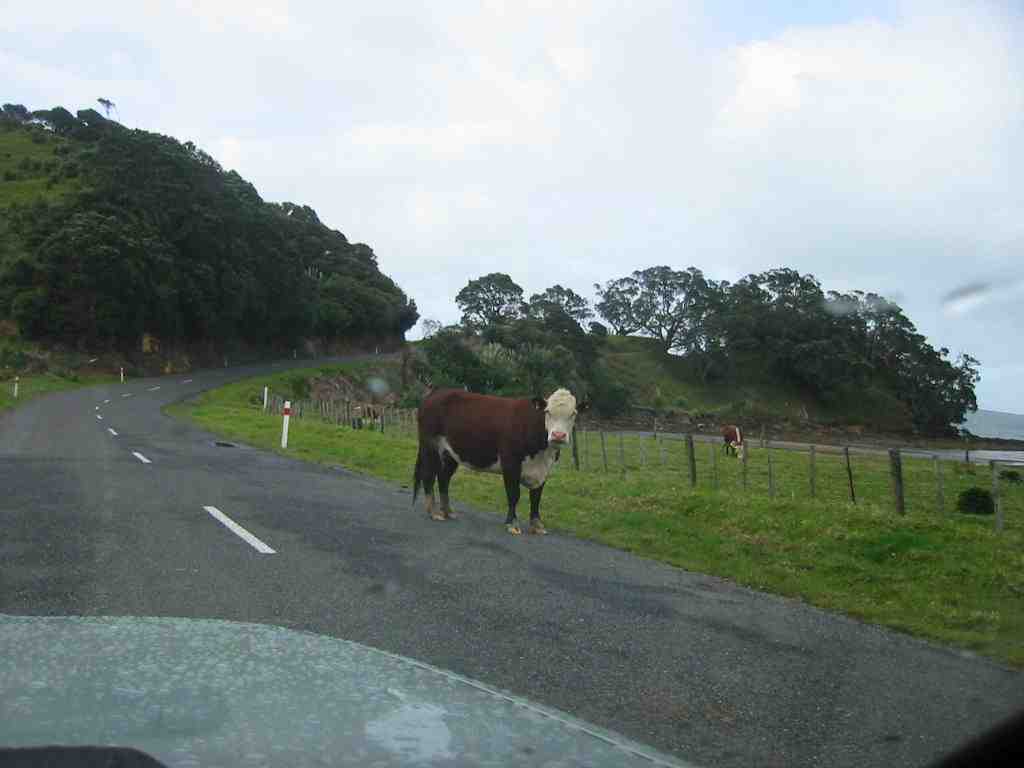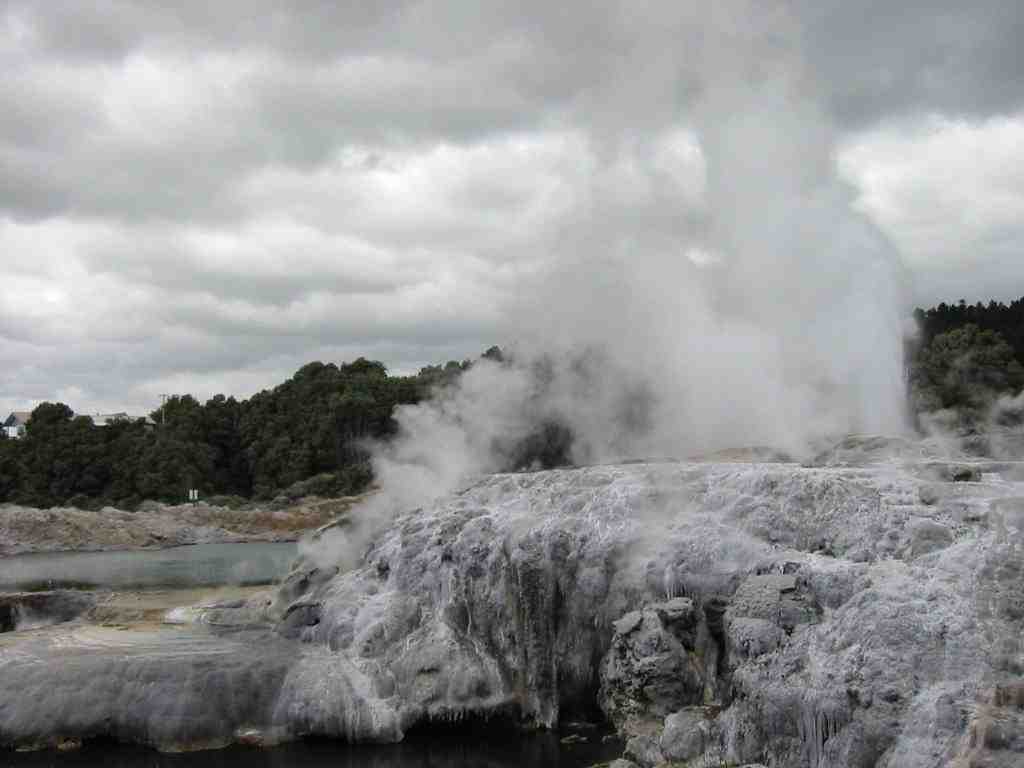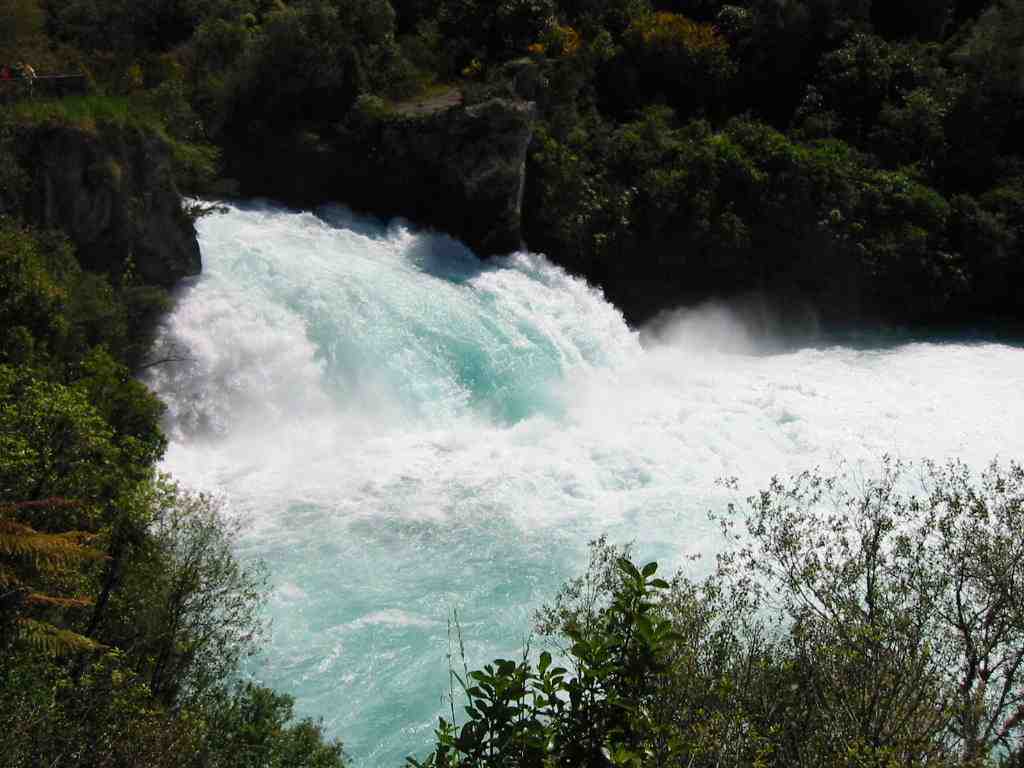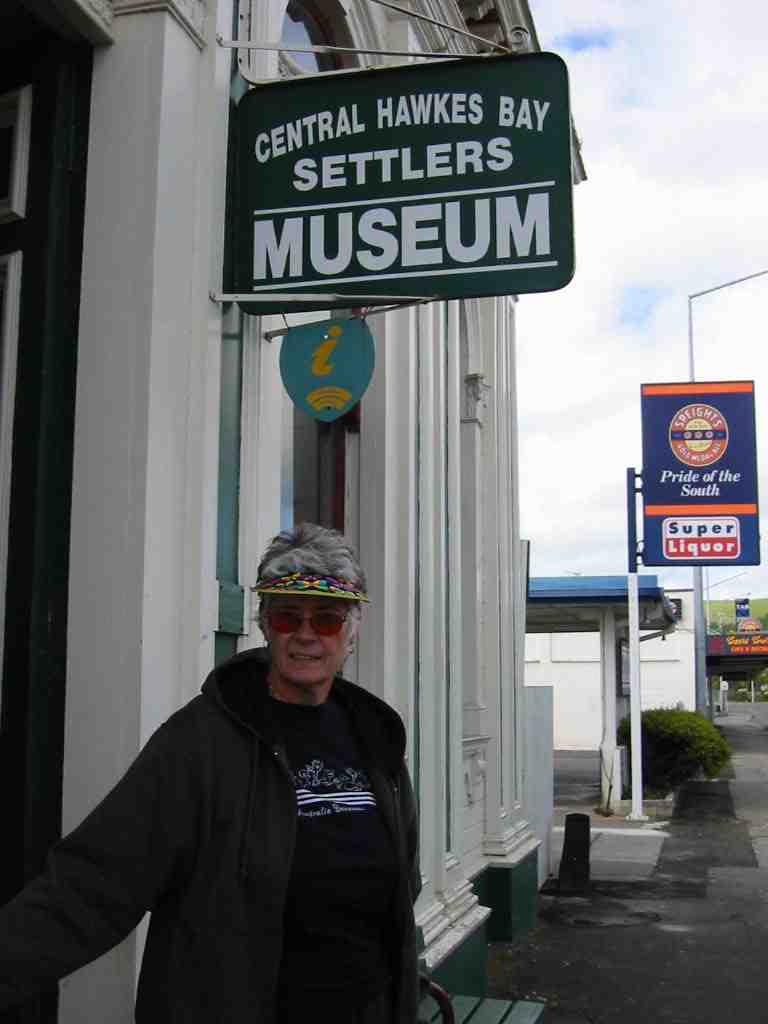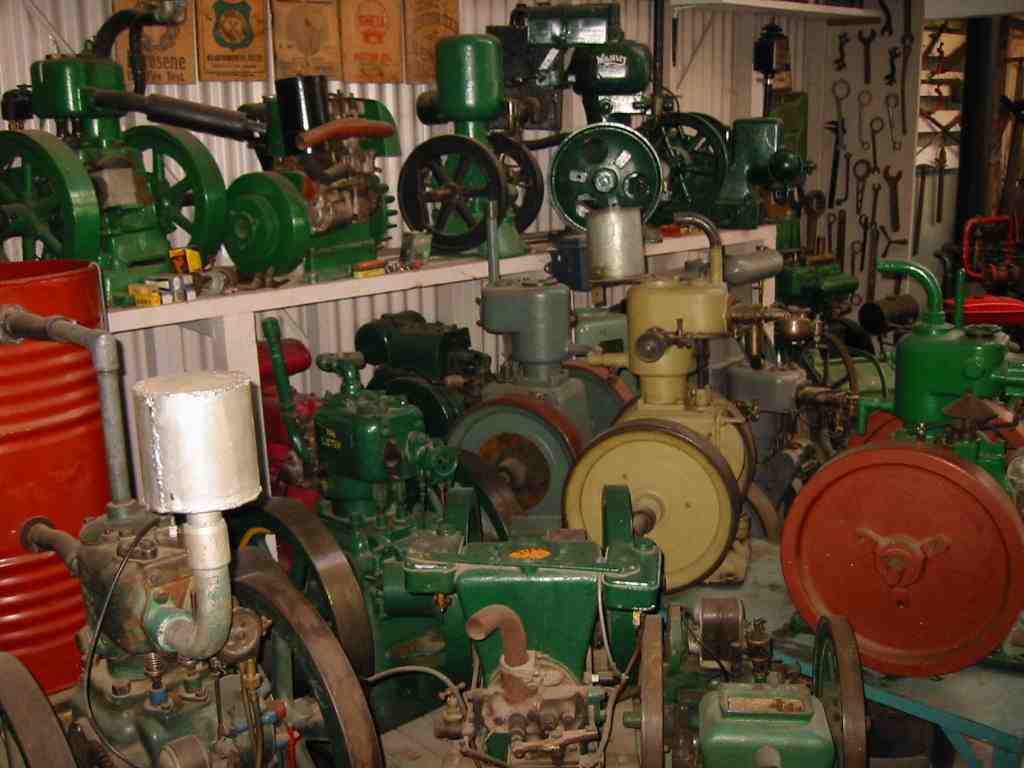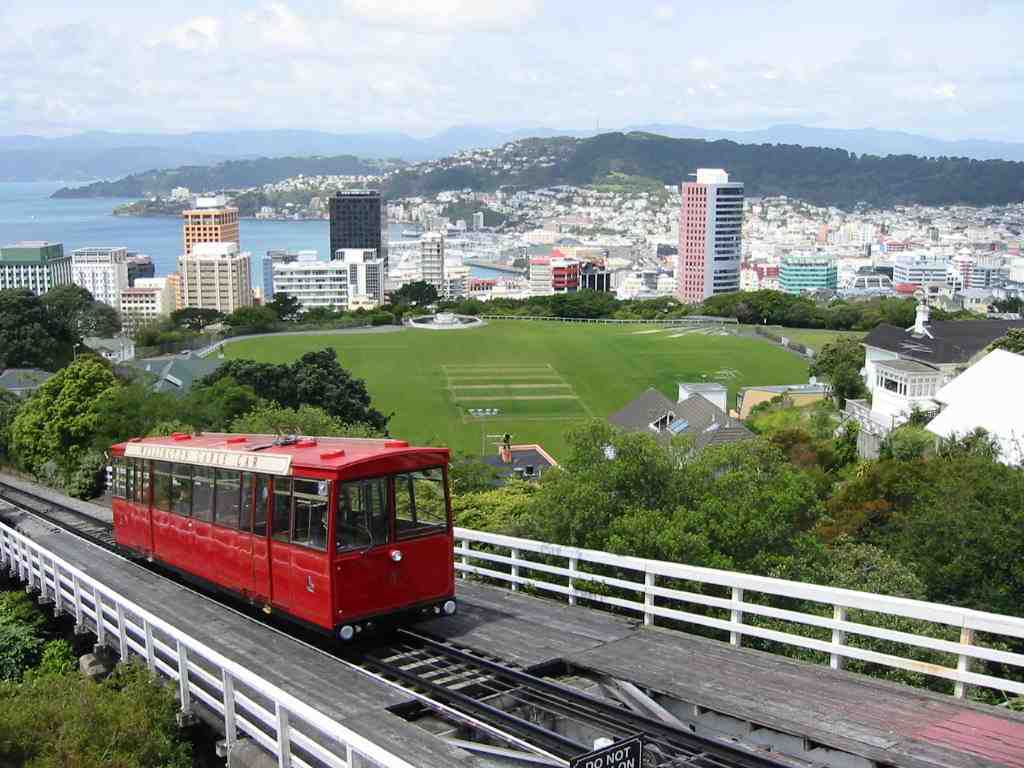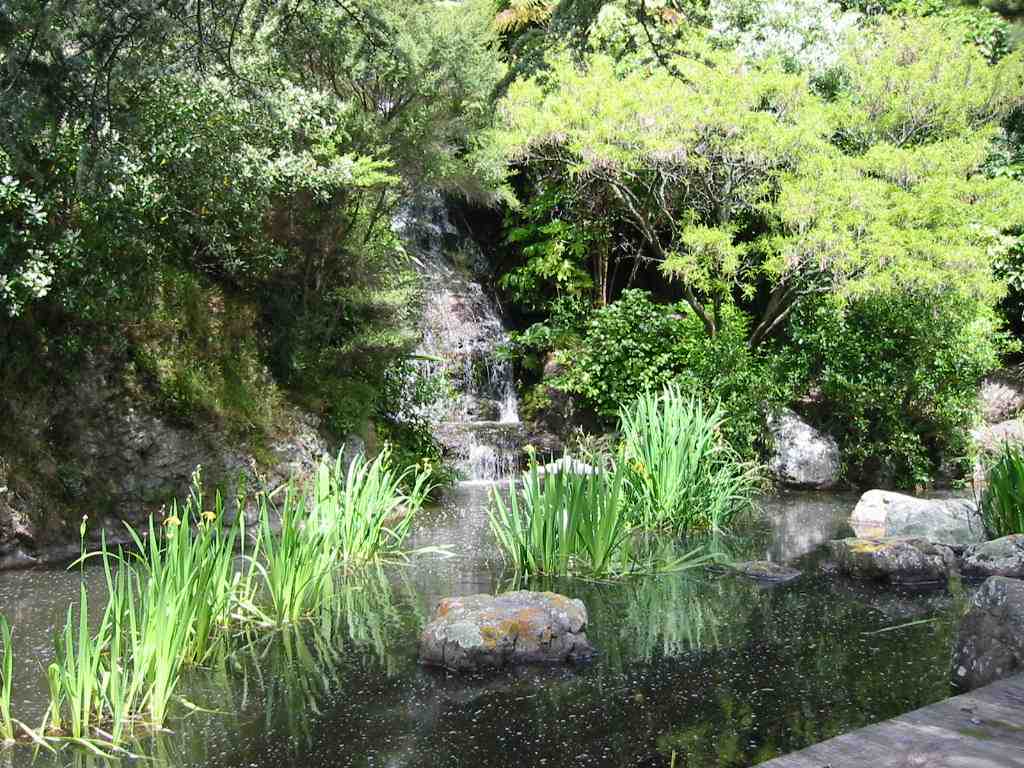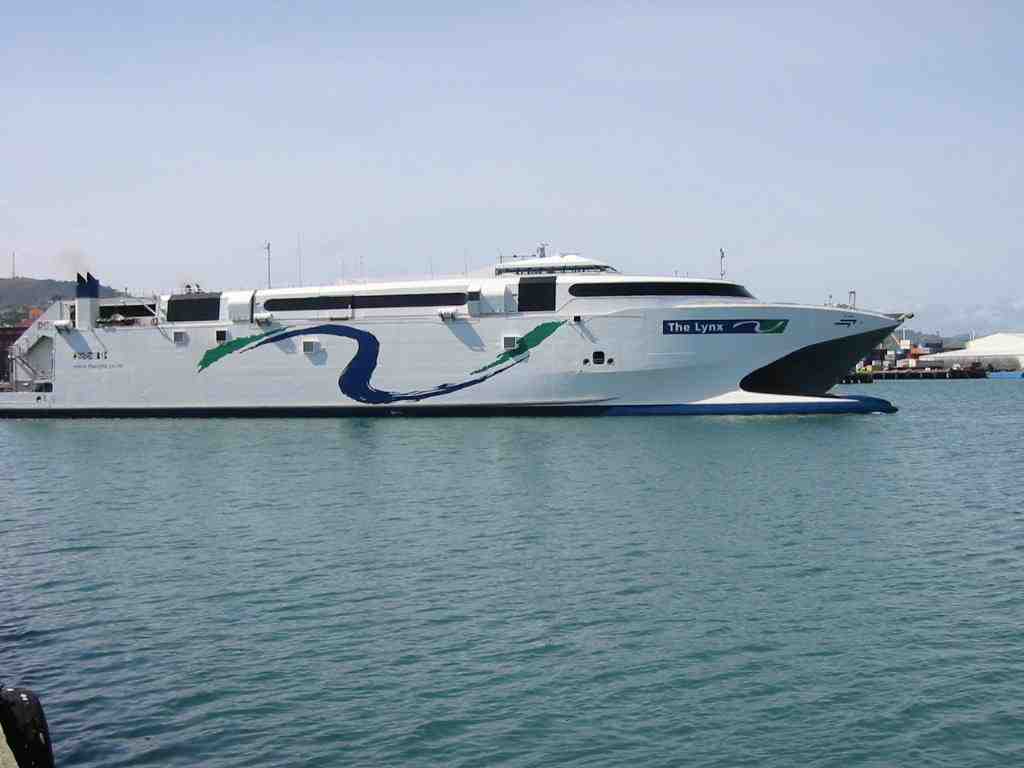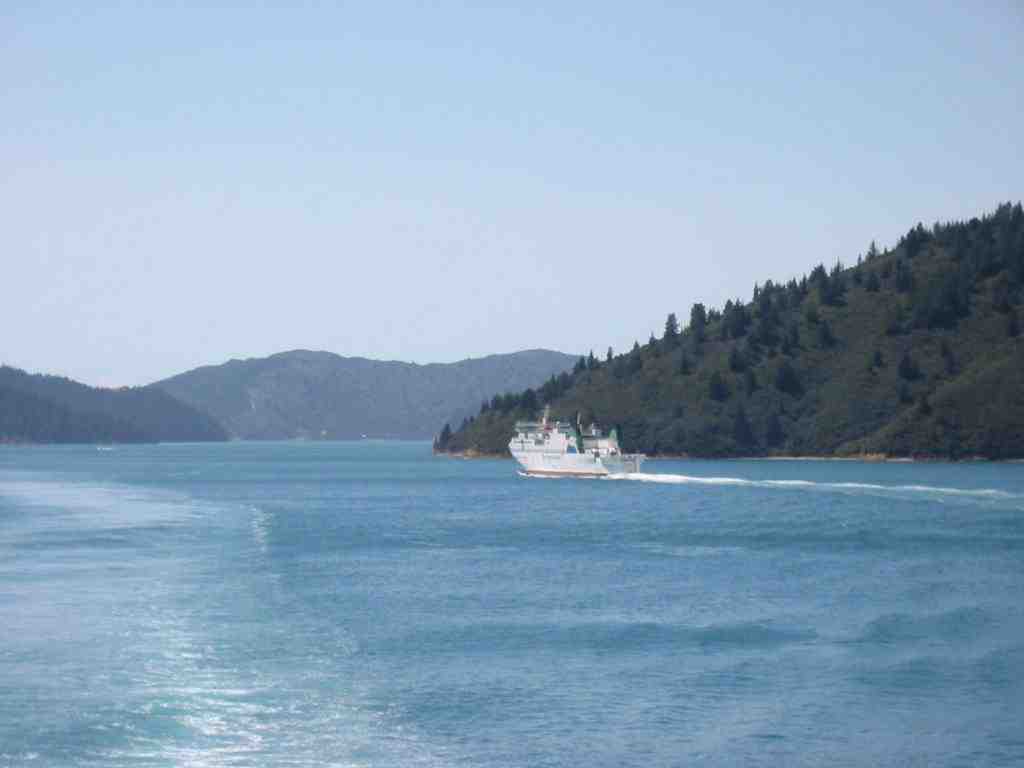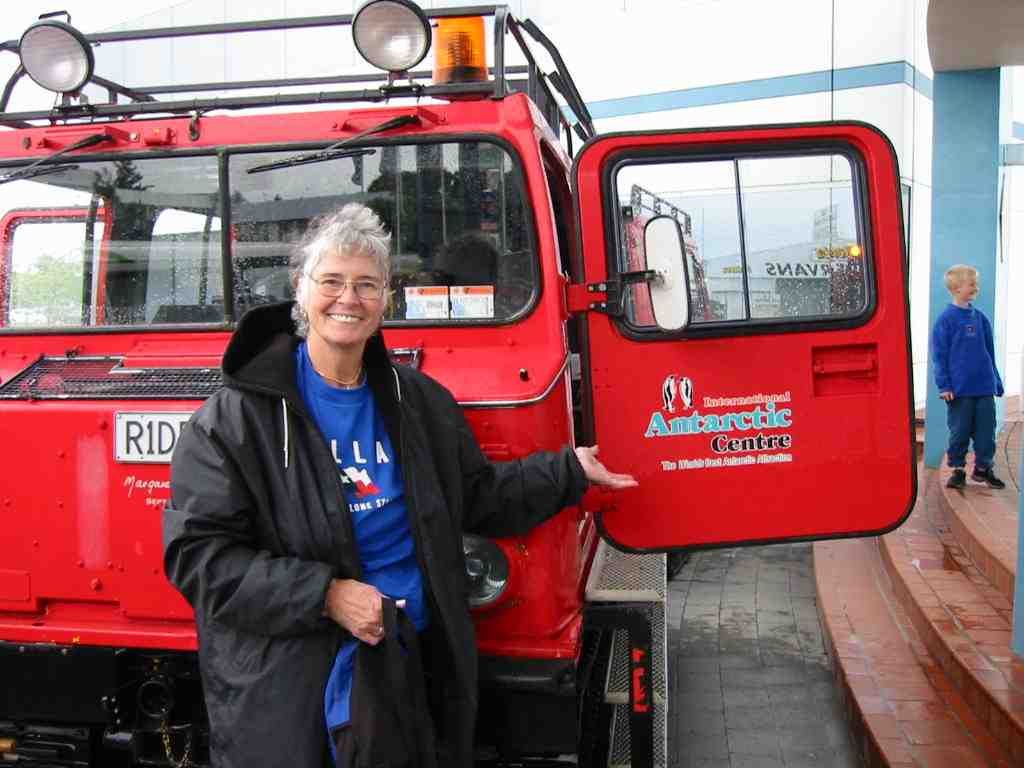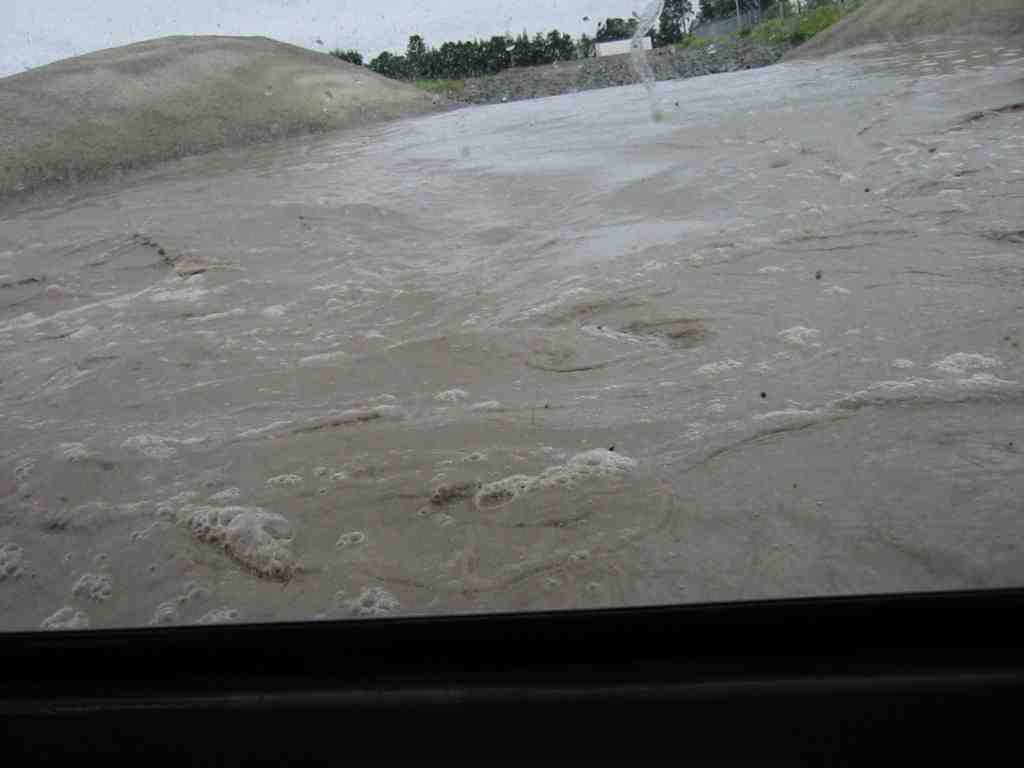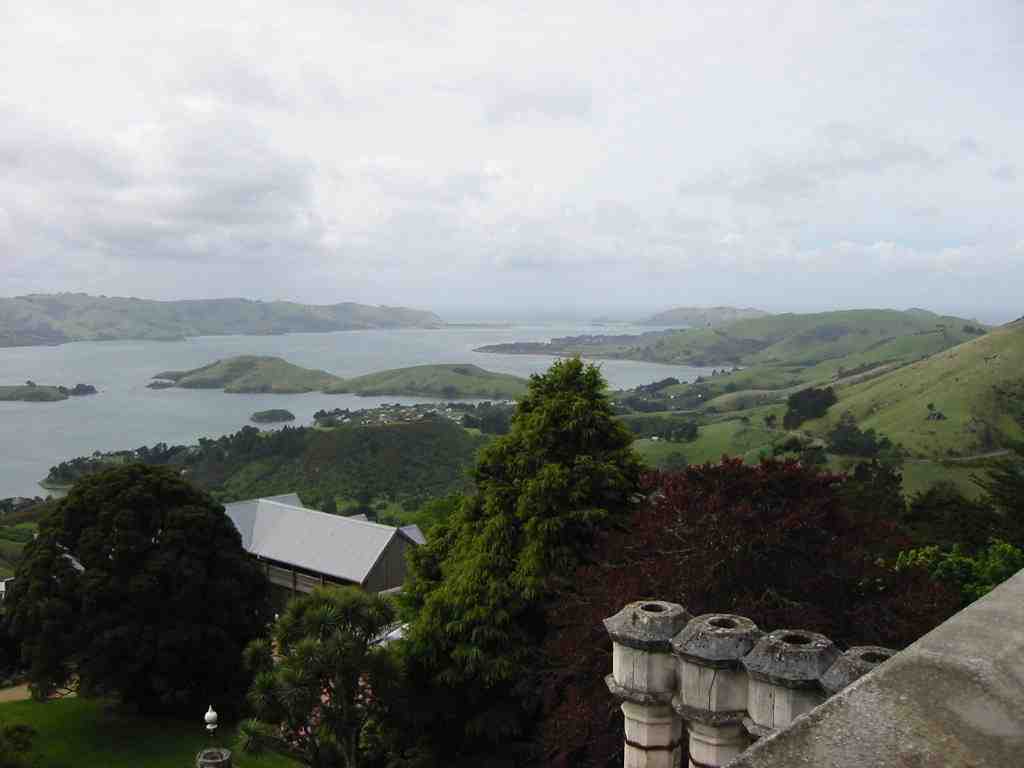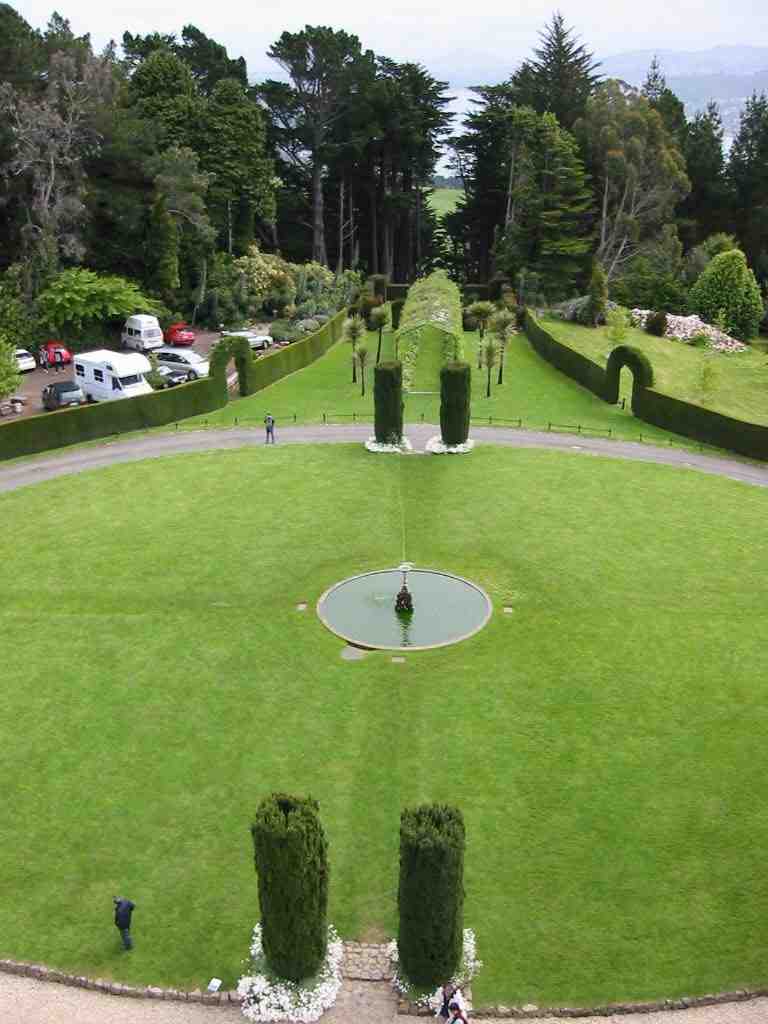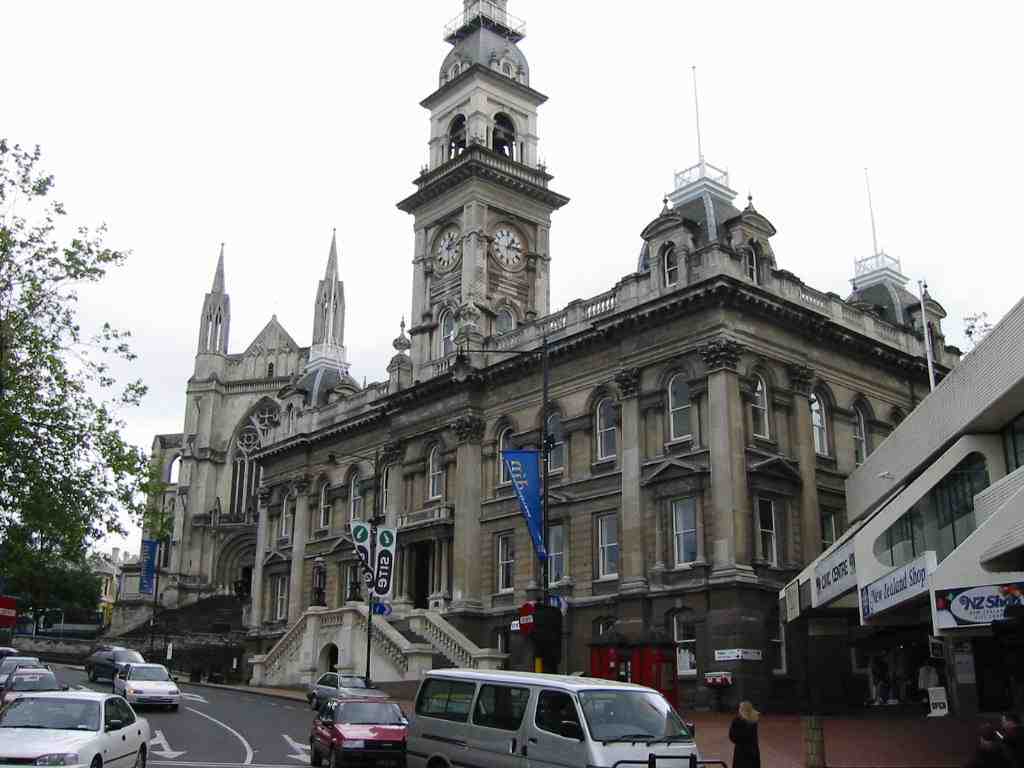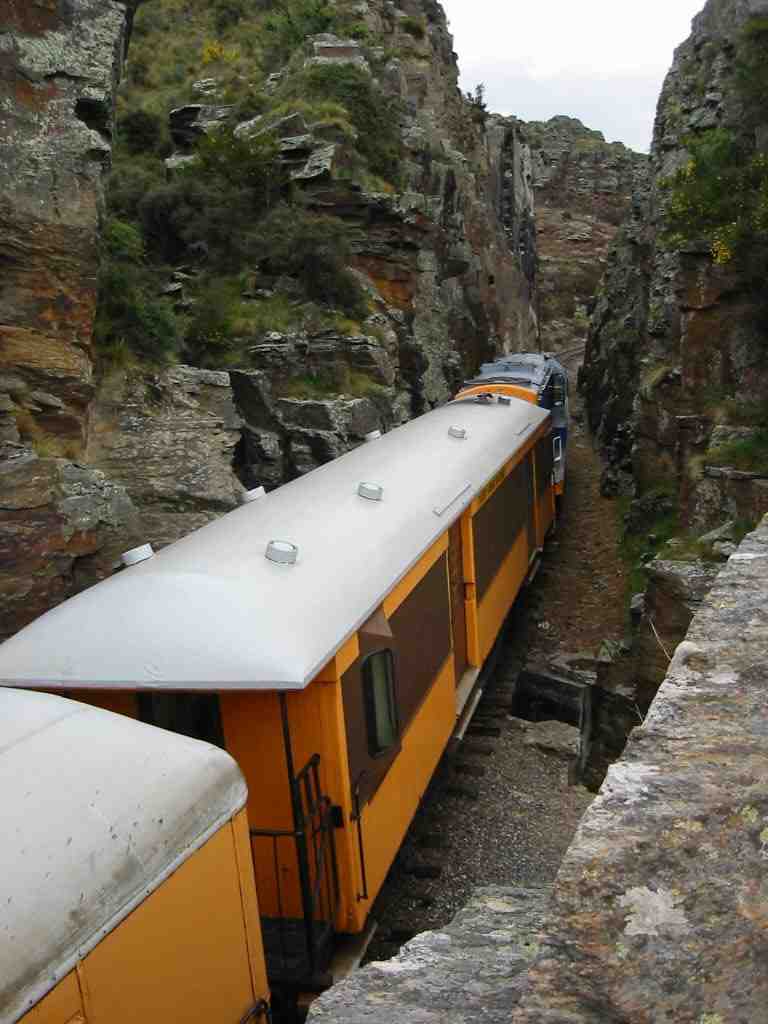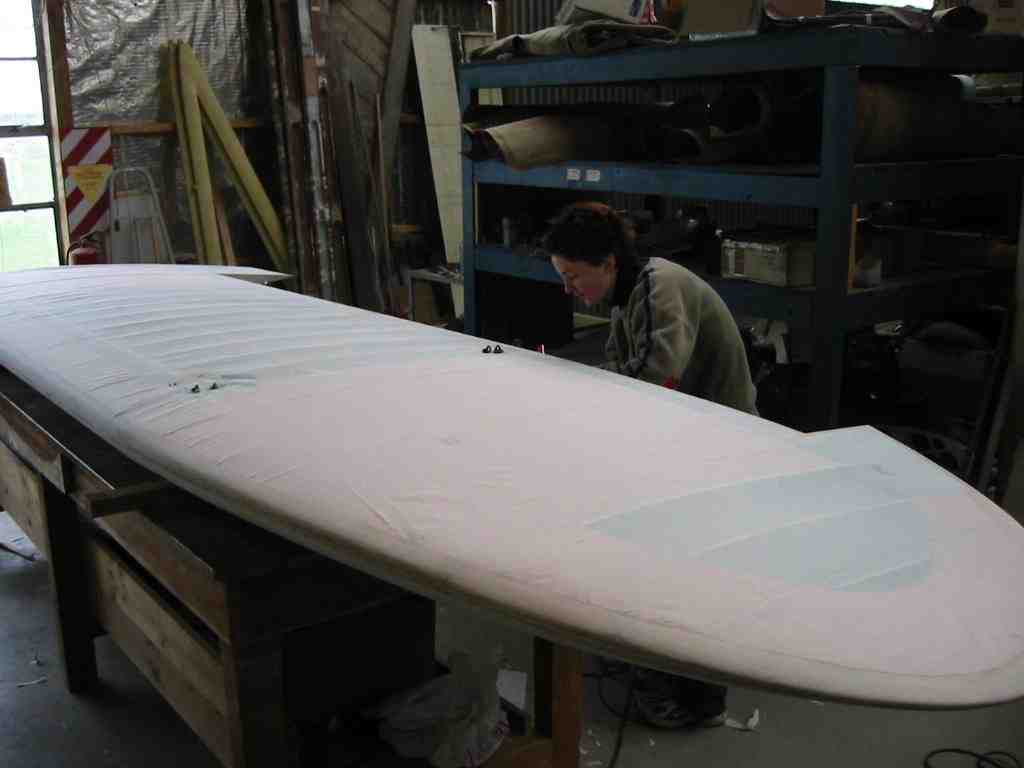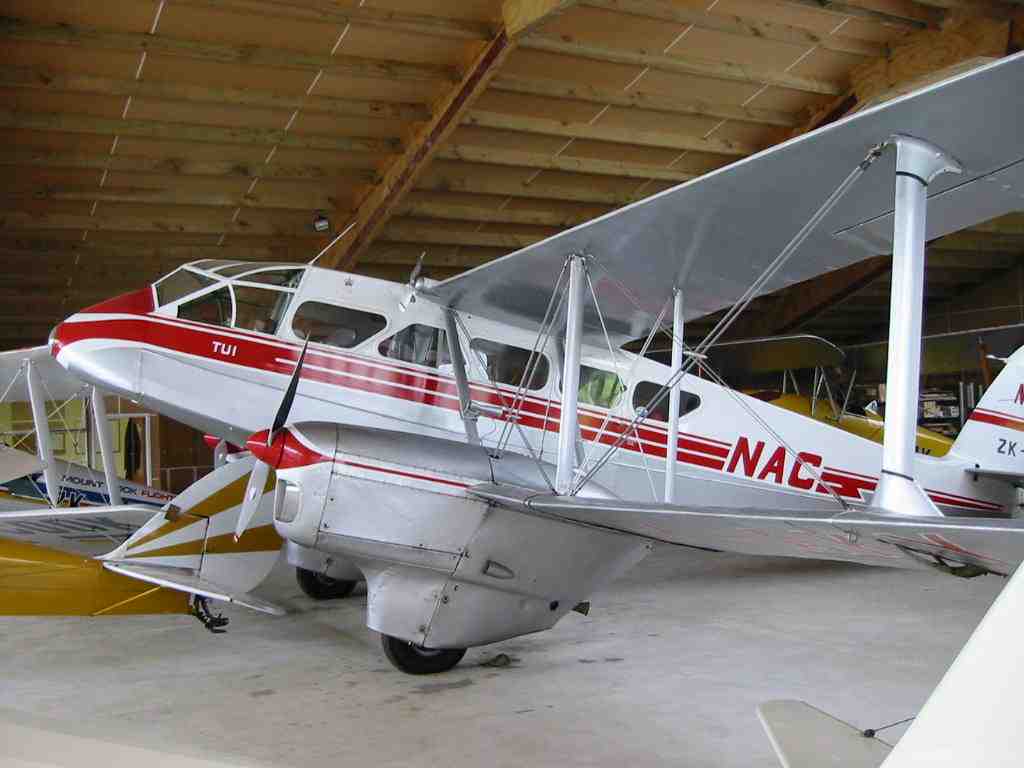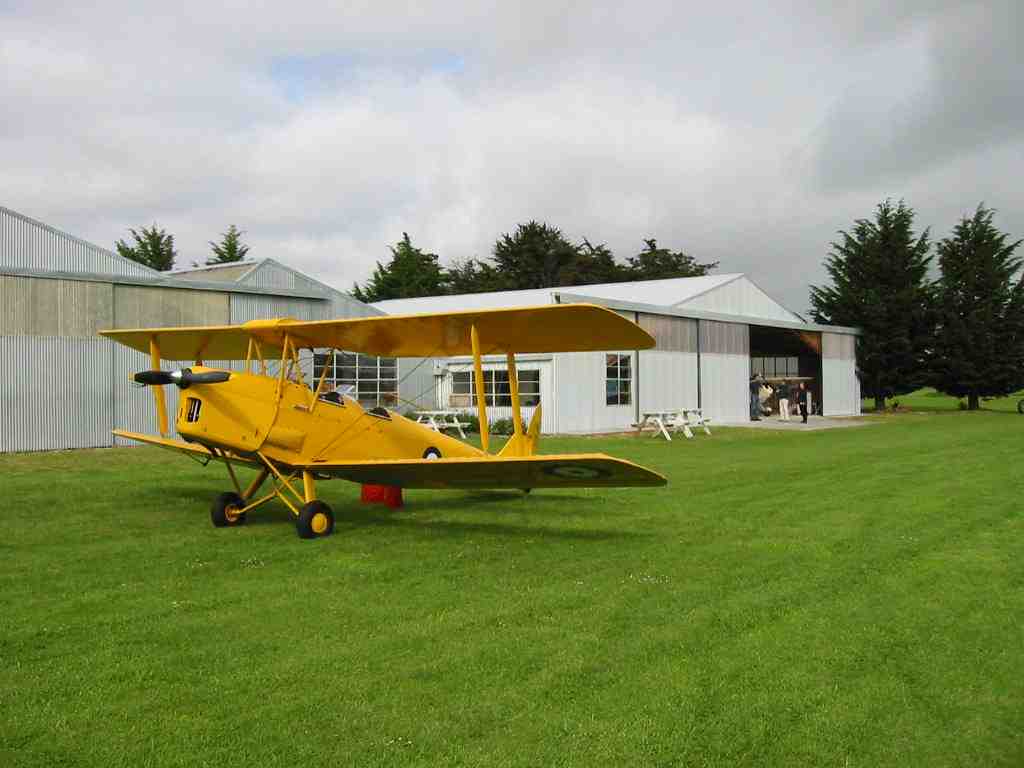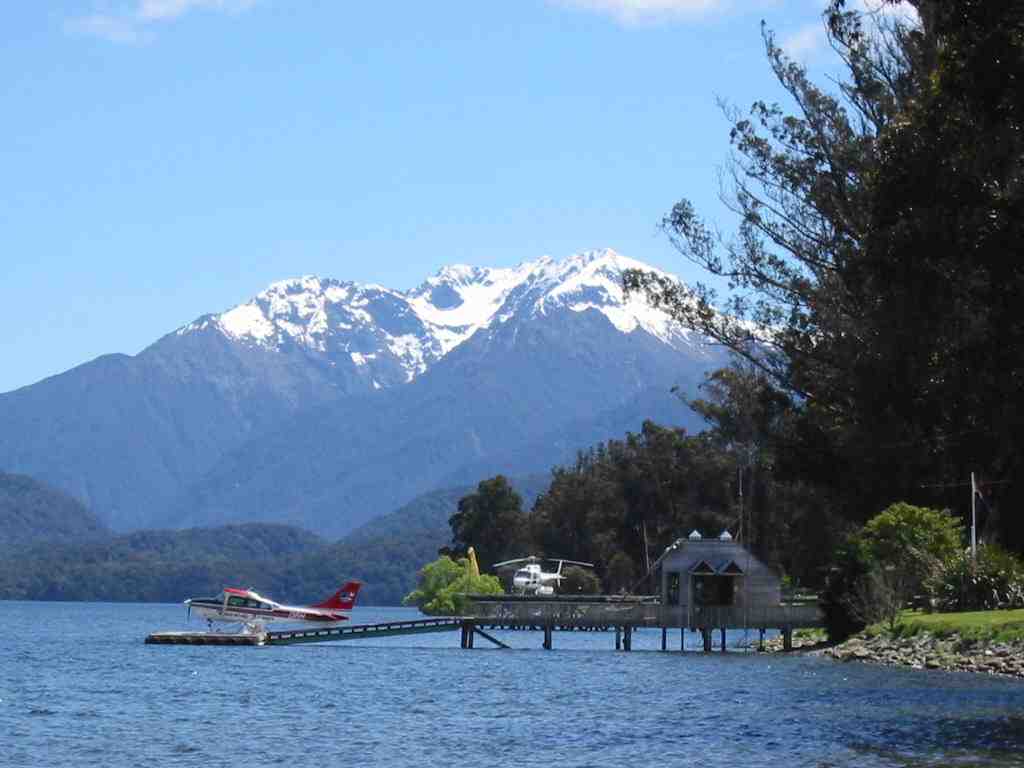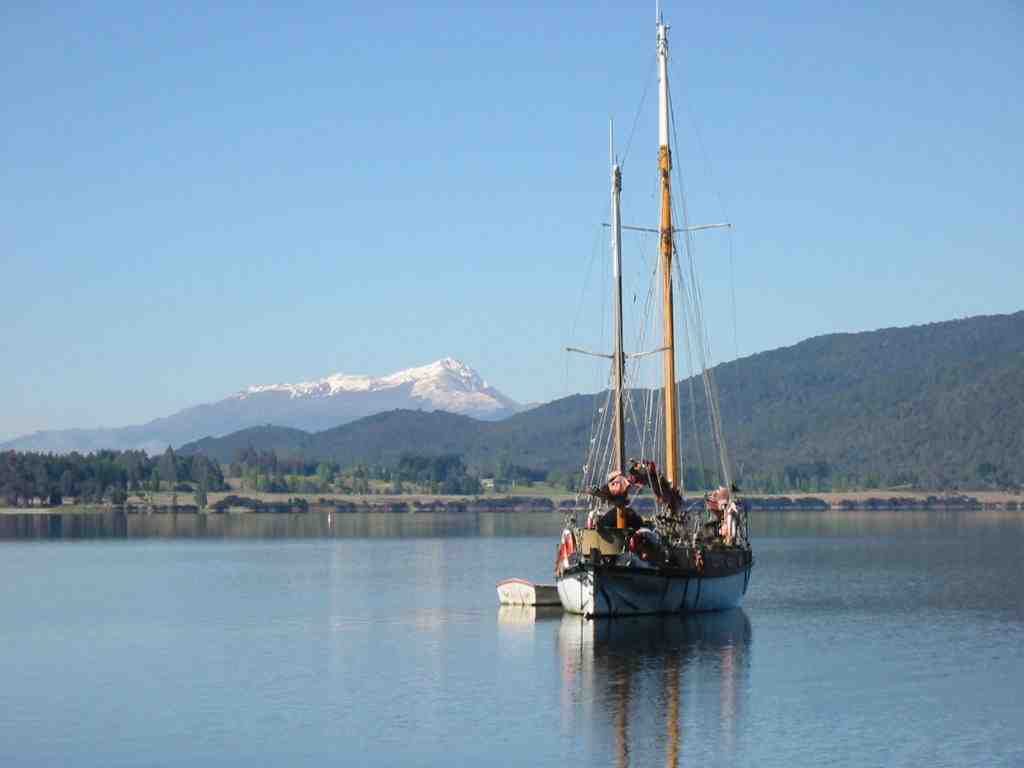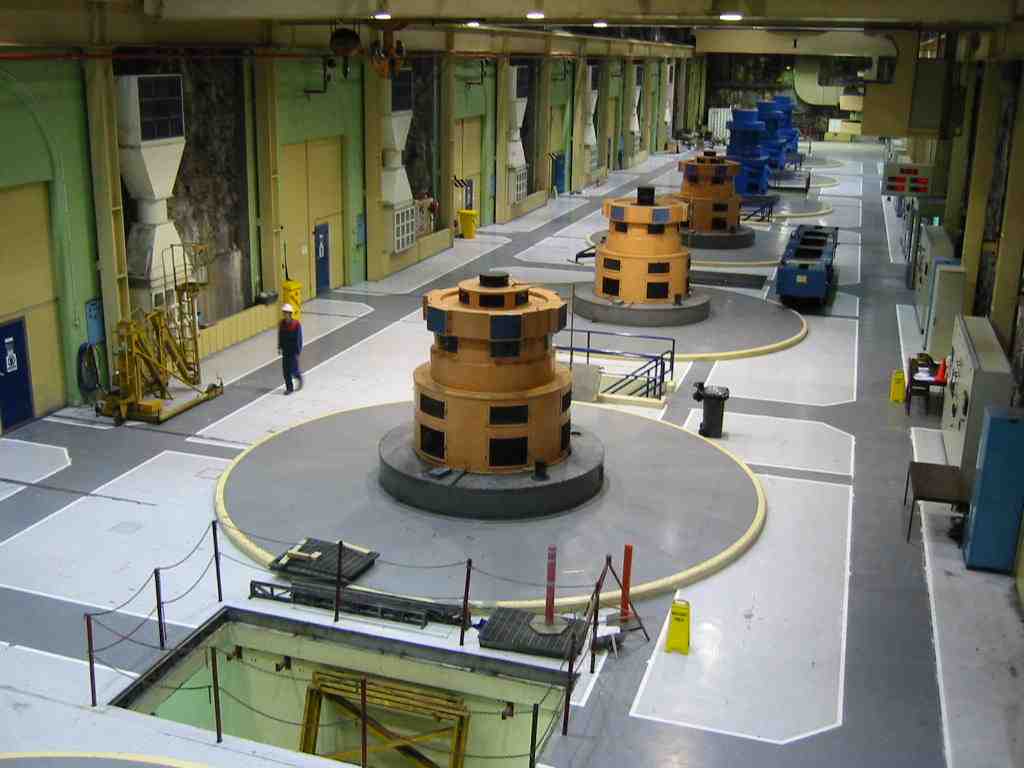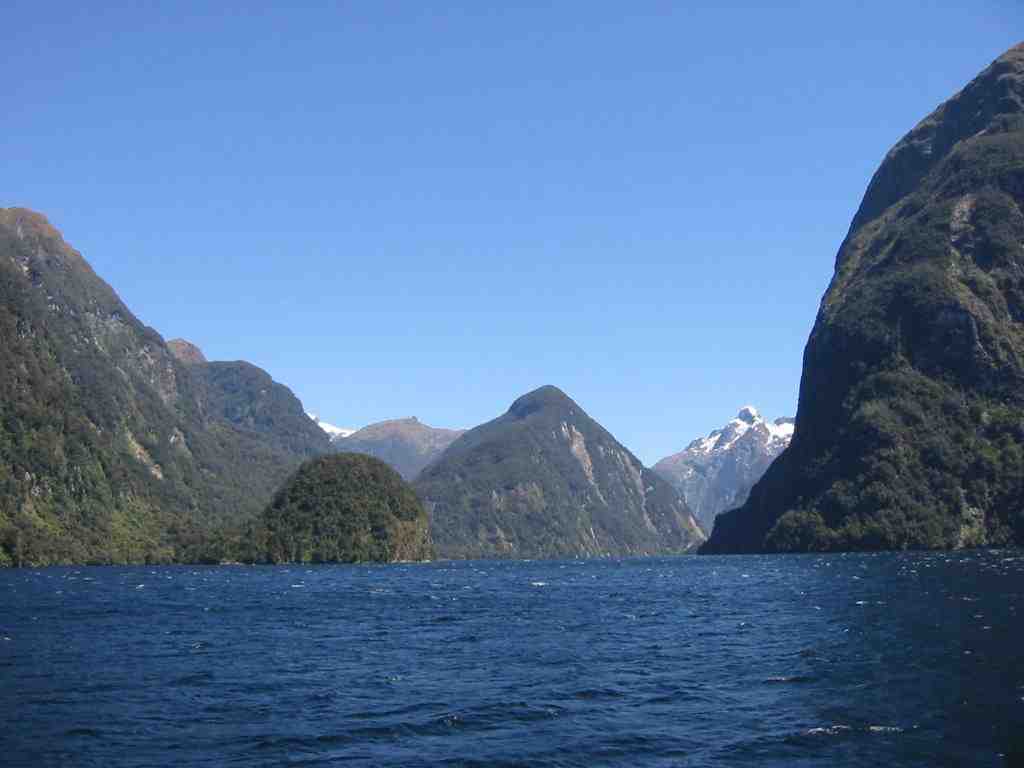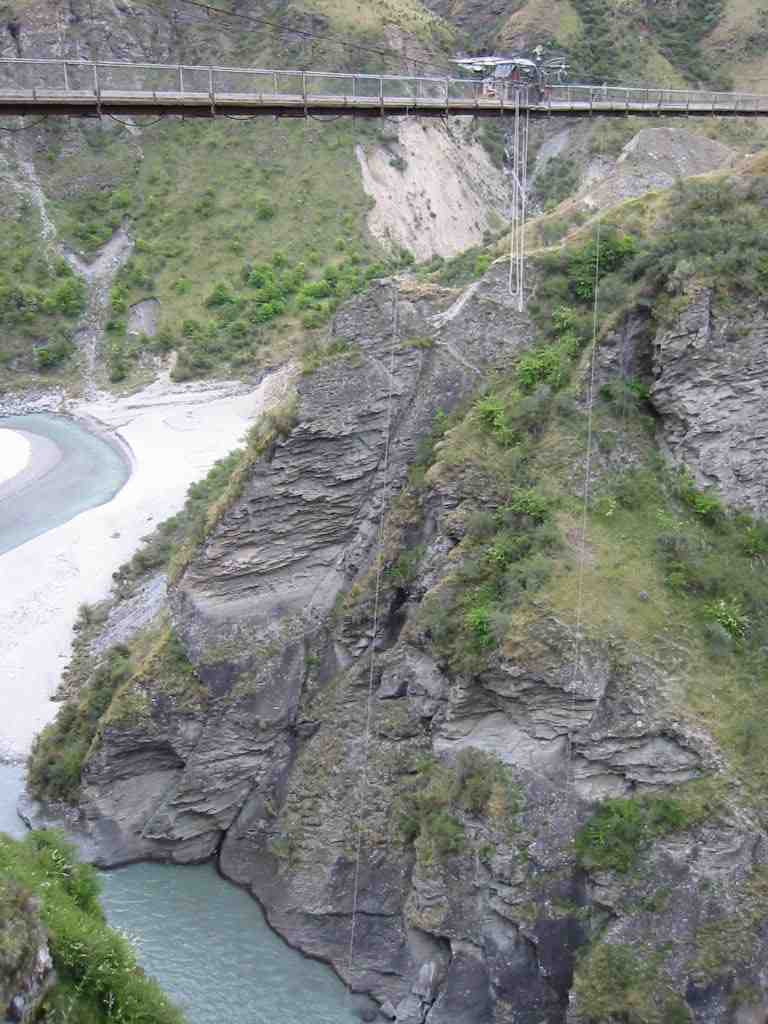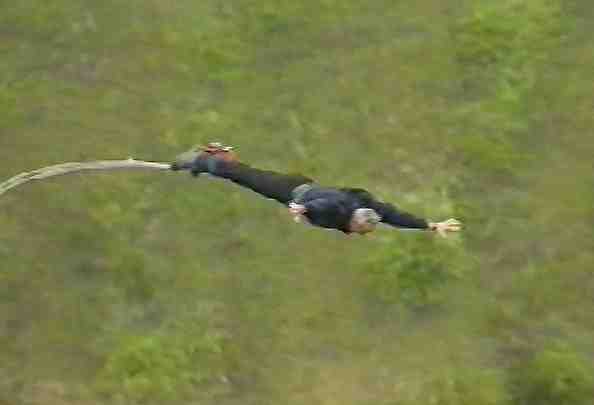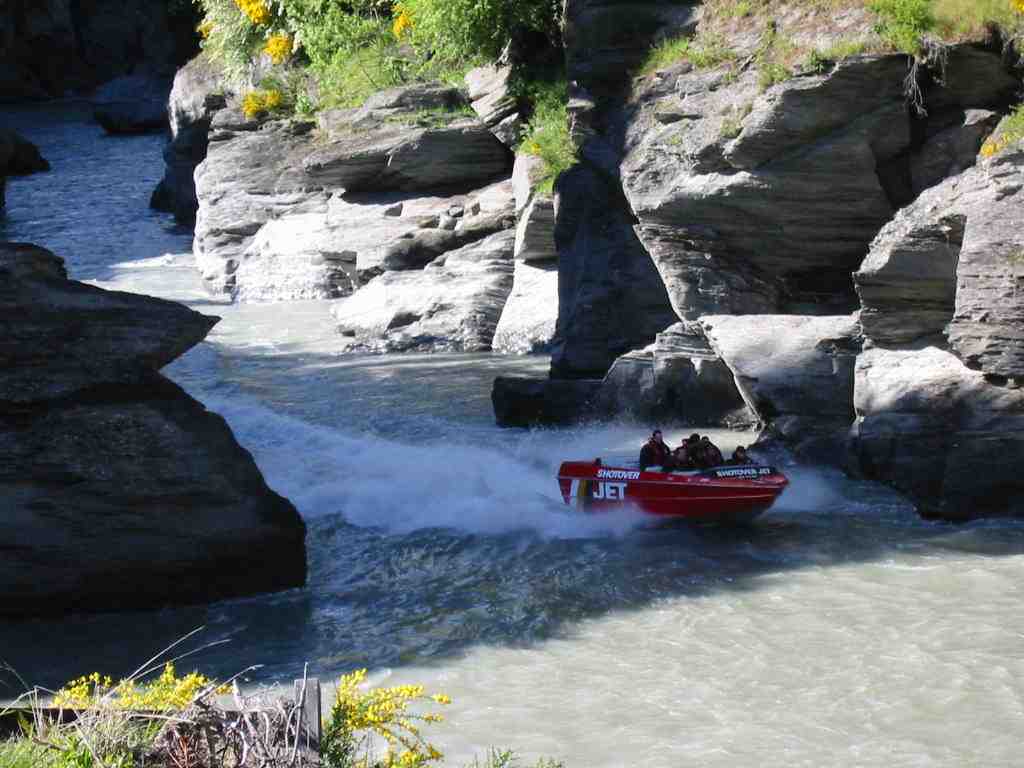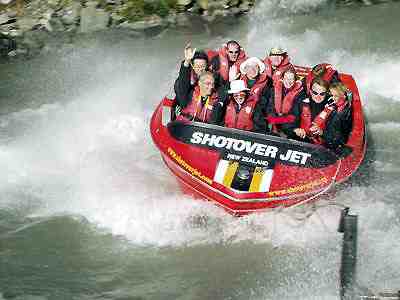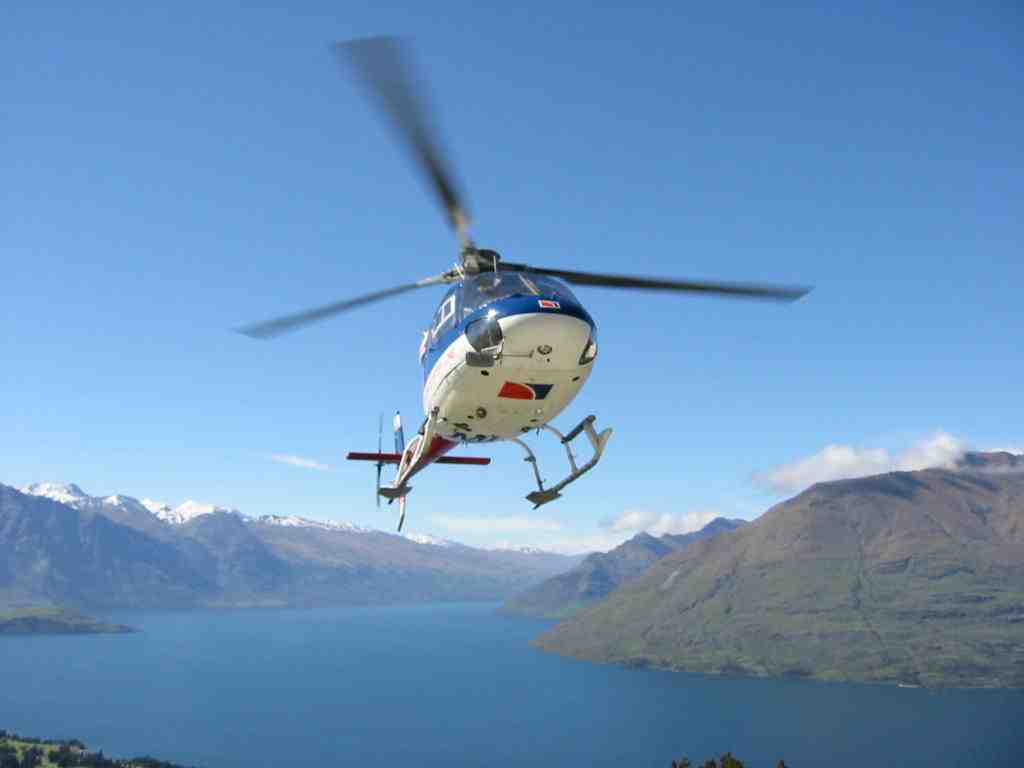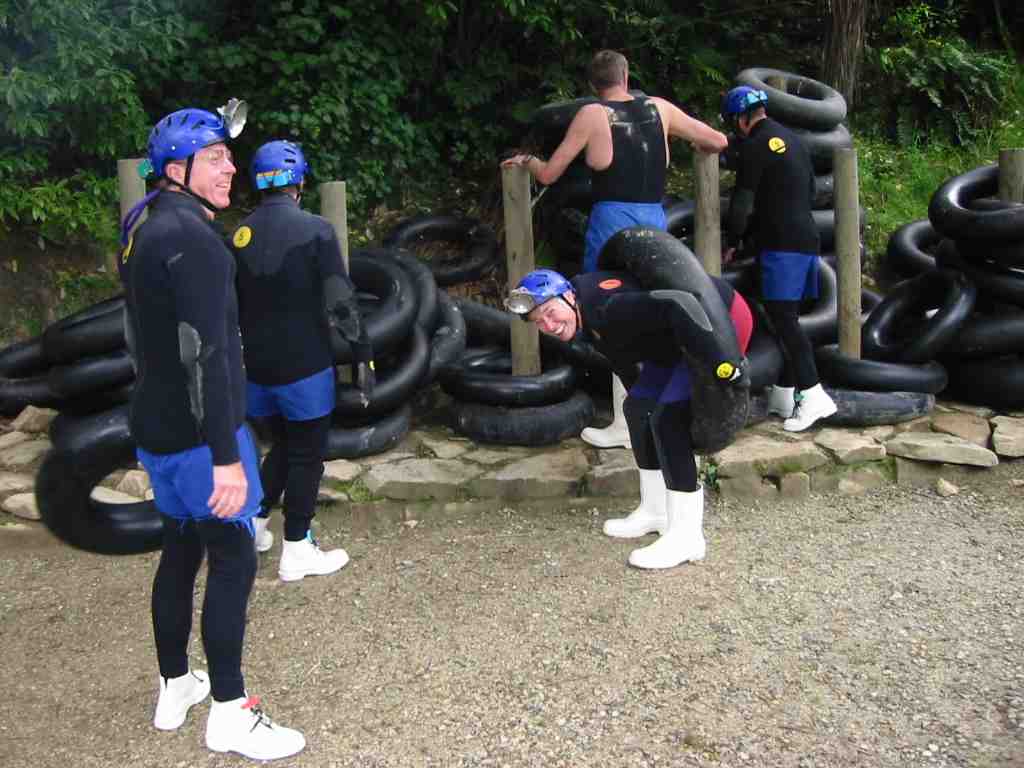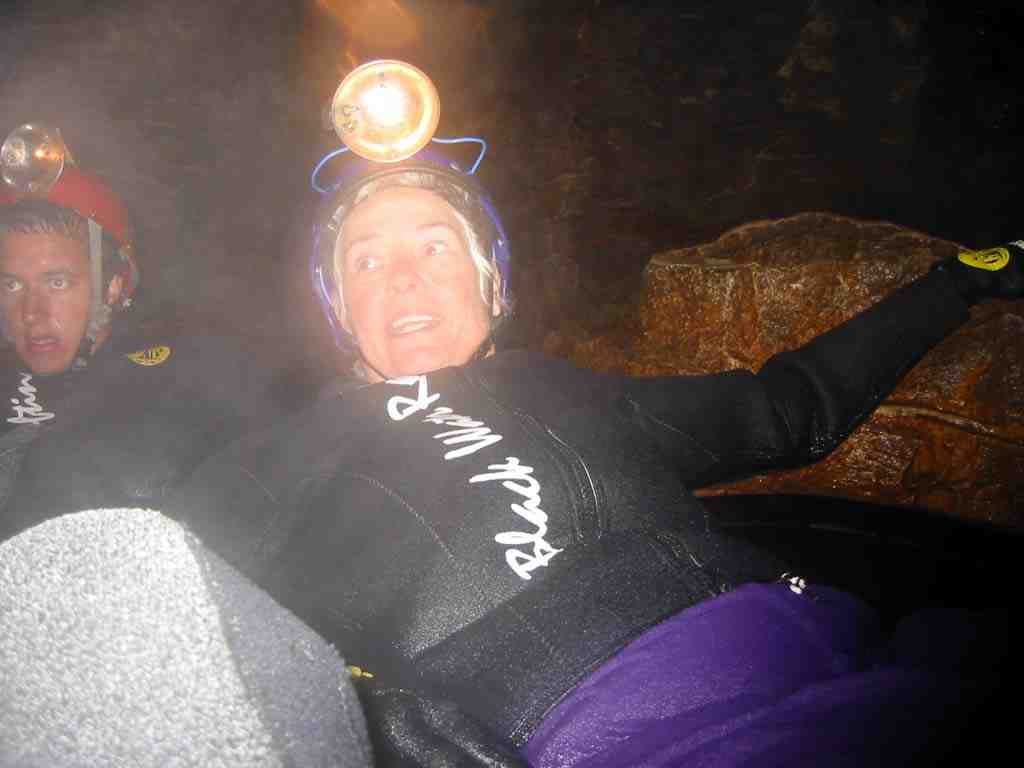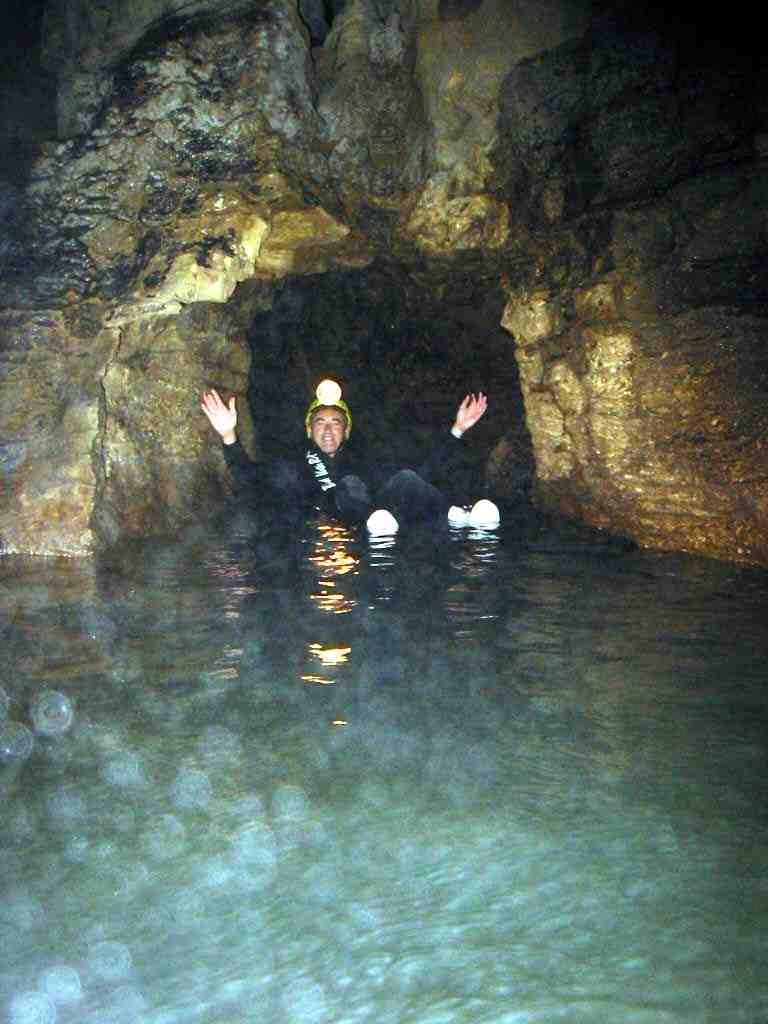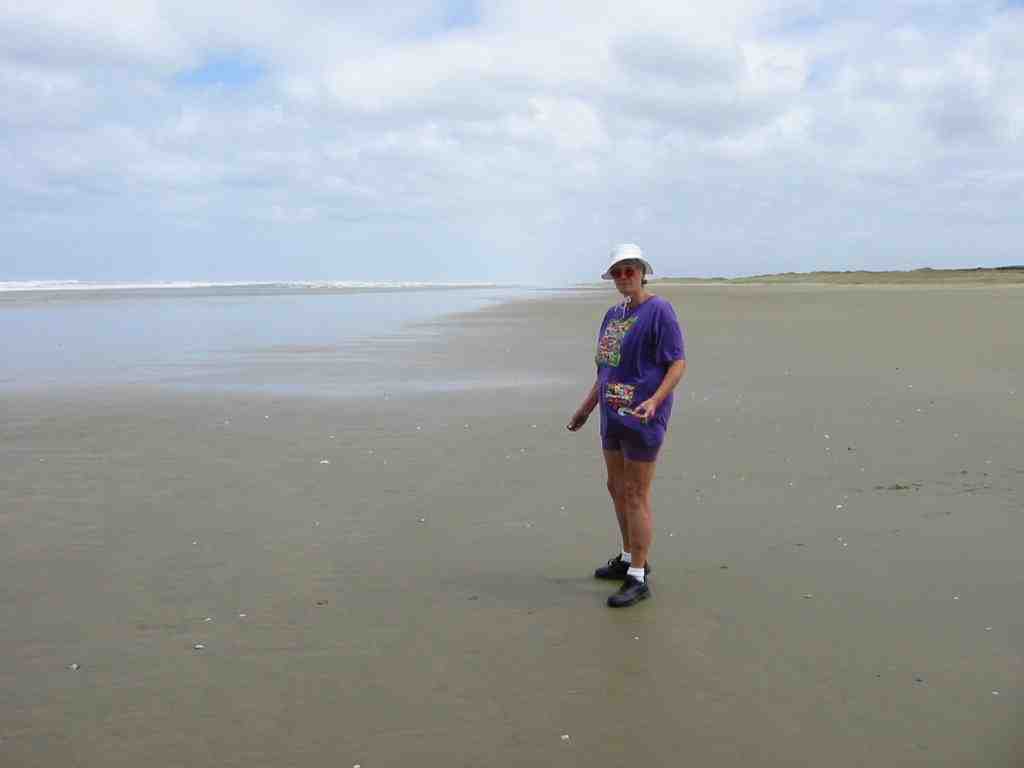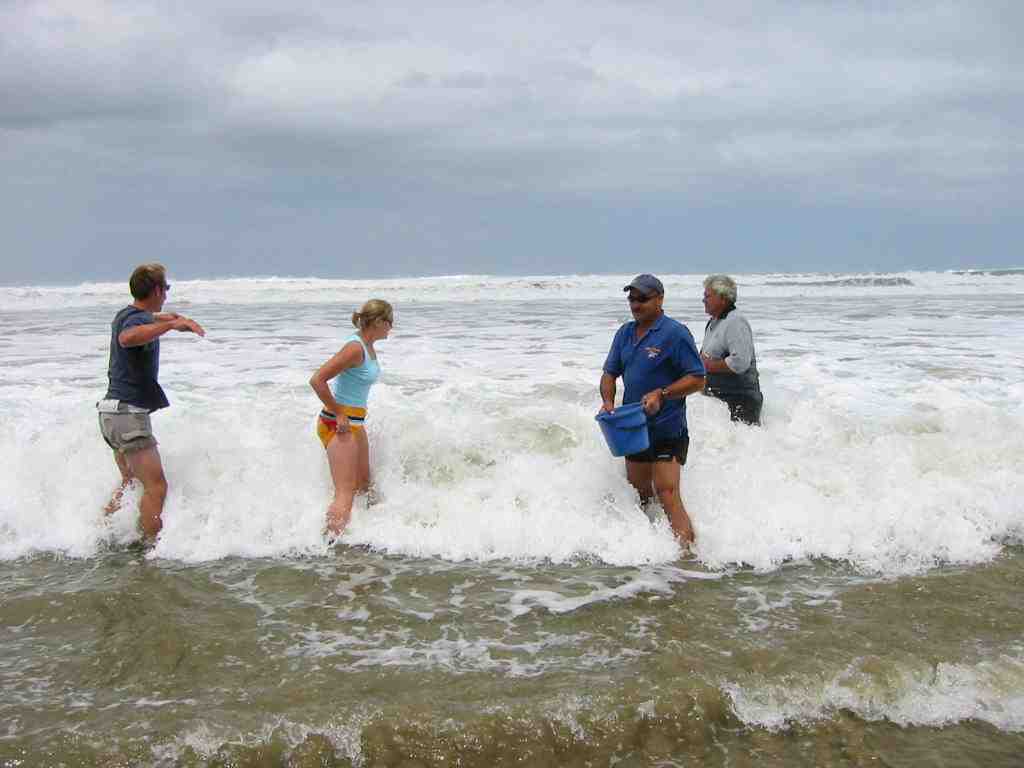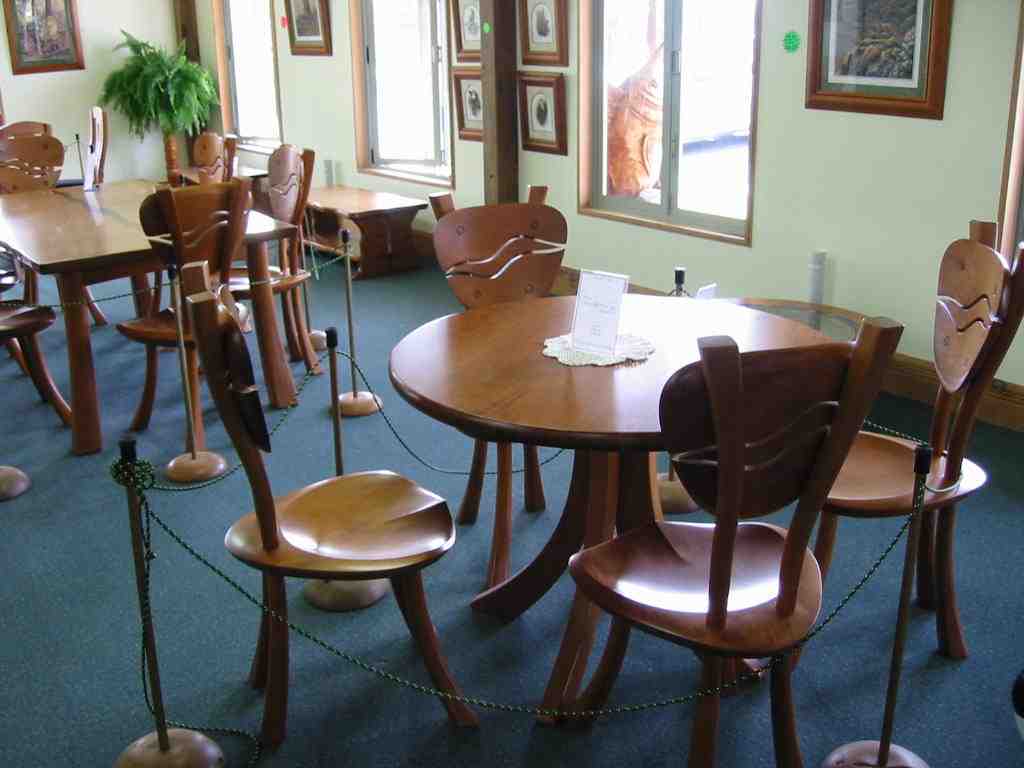J and D's Corner
Our Photo Attic - Stuff from Here & There
Back to Travel Album Index
New Zealand: Not a "flying" vacation, but a GREAT place to visit!
New Zealand 2002 - Trip Log - by John, Dani, Doug & Beth
(This is our personal log of a month-long unstructured driving trip
through New Zealand)
Day 1(Thursday 11/7/02): Arrived Auckland (Qantas flt. 26) at about 06:30 NZ daylight time on Nov. 7, having left LA on Nov. 5th at about 8:30 PM and "lost" a day crossing the dateline. The scheduled flight time of 12 ½ hours was stretched a bit by headwinds to nearly 13 hours. The aircraft was not the originally scheduled 747-400, so our seat preassignments went out the window. Instead we had a 747-300 "economy class special" which we found later had been leased from British Airways while the Qantas -400 was being refurbished. For us (J&D) it worked out fine, however, as we ended up with the bulkhead row in coach with lots of legroom and even an open seat to give us a private row. We were able to sleep several hours, if fitfully.
Immigration & customs was fast and after some milling around we were in our rental car and on the road before 08:00. After a getting slightly lost, which allowed some practice time driving on the left side of the road in Auckland’s morning traffic, we stopped briefly at our pre-booked motel to see if we could get an early-early checkin (no). Spent the middle part of the day touring the largest park in downtown Auckland, which was home to a large museum and a botanical garden. Although there were a number of daylight hours remaining the general consensus was to beat an early retreat to the motel and call it a day.
Day 2 (Friday, Nov 8th): After breakfast we got under way around 09:00 and started out on a planned route to the Coromandel Peninsula, a holiday area across the Hauraki Gulf east of Auckland. We took the "Pacific Highway" route, an aggregation of secondary roads generally following the shore, and got our first good look at green, green New Zealand. Unfortunately, Beth started feeling queasy almost immediately and by the time we made a lunch stop at a small beachfront settlement she had pretty much lost interest in touring. Unfortunately, we were only about halfway to the next town of any size, so she had to endure a couple of hours of driving before we reached a suitable motel.
Checking into the family-run Rolleston Motel in the town of Thames, we got Beth bedded down with the help of Elane, the proprietoress and a typical ebullient Kiwi. The remaining trio then went about the tourist bit, visiting a working goldmine, checking out the town and having a great dinner (lamb for me, a local whitefish for Dani, T-bone steak for Doug. Beth got a leftover roll.
Day 3: Beth was still very much under the weather so we decided to limit the day to a short run further up the peninsula to the town of Coromandel, only about 55 km away. Elane called ahead for us and determined that the Pohutukawa Coast Chalets would have a room for her ready when we arrived. Unfortunately, our collective understanding of the precise location of the Chalets was a little off, and it involved about 16 km of winding road north of Coromandel, which took us much further into the "bush" than we anticipated. It worked out OK in the end, and the proprietor was happy to see us, this being somewhat off season and business being a little slow. The area appeared to cater to fishermen mostly, and the Chalets were typical NZ "budget" with kitchenette and linen optional ($5US extra). Apparently budget travelers carry their own linen and make their own beds, which when you think about it makes sense economically and operationally for both parties.
Once again the functioning trio struck out and, returning to Coromandel, we took a 15-inch gauge railway ride up a local mountain, looked at a really delightful local museum (excellent collection, displayed mostly on open shelves in a touchable format) and had lunch. By early evening we returned with food for a light dinner and found Beth feeling considerably better. Cooked my curry noodles and relaxed ‘till bedtime.
Day 4: Everyone including Beth up to norm this morning so we were breakfasted & off by 08:15. Moving south from Coromandel we took the scenic "301" gravel road across the peninsula, then down the winding east coast road. Except for stops for lunch supplies, a picnic at a seafront park and a couple of stops for photos and gas we pretty much drove for 6 hours or so. Although we only covered around 200 km, it was a pretty full day’s trip to Tauranga, our stop for the night. Tauranga is on the edge of the island’s central geothermal area, and each of our motel rooms has its own 40C mineral hot tub, fed by a constant flow of hot water. Coupled with our four-poster bed it is a very romantic stop for the evening. Gourmet dinner of fish & chips from the take away (takeout) place next door and we go into the full relax mode.
Day 5 (11/11/02): Another in-room breakfast and we’re off by a few minutes after 08:00. First stop was a quick side trip to Mt. Maunganui, a small but prominent mountain at the tip of a little peninsula outside Tauranga. It is apparently a weekend getaway and home to a thriving yuppie colony, and normally a popular walking spot, but gale force winds gave us a good excuse to snap a few pictures and depart.
Before leaving town we sought out the auto association office "AA" and hit a bonanza of maps and some tour guide books plus a free 6-month membership, all on the basis of our US AAA membership. Armed with proper maps we struck out for Rotorua, which is inland and is the heart of the North Island’s geothermal area. Viewed what was billed as one of the most active areas, home to a couple of medium-size but very active geysers and a large number of bubbling mud pots and boiling springs. Not as colorful as Yellowstone but quite interesting. It was also integrated with a Maori cultural center, dances & all that.
Next stop was Taupo, another vacation area on the shore of the very large Lake Taupo and popular with fishermen. It is also center to the North Island’s extensive hydropower installations, which supply the majority of the island’s electricity (everything is electric here, with electric heaters in every room we have stayed in, electric water heat, etc.) A very impressive "falls", actually a 300-yard long narrow and steep cut through which a major river is pinched, was just outside town. Flow rate was quoted at 160 cubic meters per second. All this travel was over the flatter (but still rolling) pasture and tree-farming central area and we were making excellent time. Based on this we decided to push on to Napier, on Hawke Bay on the east coast. From Taupo we headed generally southward through a large area of intensive tree farming. Trees abound but nowhere do you see "old growth", with plots in every stage from just logged to probably 20 years or more maturity. Outside the forest areas were the endless pasturelands with sheep, cattle, occasional small herds of deer and, once, elk. We had already noticed venison as an item on some menus.
Ending the day in Napier we found another medium-priced motel, did dinner at a waterfront pub/restaurant, took a walk along the waterfront and were ready for bed.
Day 6 (Tuesday Nov 12): More blue than cloud outside the window this morning, a pleasant change. We decided to make another fairly long run all the way down to NZ’s capital, the harbour city of Wellington. This took us down the rolling "plains" (more roll than plain) on the east side of the Ruahine Range, where snow showers still capped the snow covered peaks.
No great "tourist" attractions along the way, although we did stop in another of the many small local museums, this in the town of Waipawa. These museums are essentially collections of dozens of attics, basements and storage sheds from the surrounding area and are well worth looking at. A retired mechanical engineering teacher was running this particular one and he had amassed a huge collection, or maybe pile would be a better description, of stationary engines. These were used on the small farms before electricity came in, and most appeared to be in ready-to-run condition. US collectors would salivate over this batch.
After passing through a succession of small towns we made a sharp climb over the southern tail of the mountains and down into the Hutt river valley. The Wellington suburb of Petone, on the northern curve of the Wellington Harbor, became our stop for the night. The Petone main street consists of a whole row of 1920’s vintage commercial buildings, and we had dinner in a smorgasbord restaurant housed in an old department store. (Burp…ate too much, of course. I had three deserts)
Day 7 (Wednesday Nov 13th): Checked out tomorrow’s inter-island ferry booking, then toured downtown Wellington. Te Papa, the national museum, is very up-to-date and innovative and an absolute must-see. All the usual areas of museum interest are presented in unique ways, such as "70 years of Kiwi history" as a 12-minute multimedia show in an antique cluttered "attic". Afterward we walked around the botanical gardens, which cover 25 hectares (60 acres) with formal rose gardens, tropical and temperate greenhouse displays, and a total of 106 formal planting beds plus forest areas. From the botanical gardens we took an inclined railway/cable car down the waterfront area and went through the Wellington City & Sea museum. This museum highlights the fishing and shipping connection around which Wellington grew, presented in both conventional & high-tech fashion. A Maori legend presentation was worthy of Disney, with tiny holographic characters wandering around a "stage" set with various nautical antiques.
This pretty much used up the whole day and provided more walking & exercise than the sum of our previous six days. Considerable moaning & groaning from the ladies this evening.
Day 8 (Thursday Nov 14th): Left the motel at about 08:20, 10 minutes before schedule, which was just right because we encountered our first NZ traffic jam with everyone from our suburb trying to get on the motorway into Wellington at the same time. Worked out perfectly though, and by 09:00 we had the car turned in and were checked in for the 3-hour ferry ride to Picton. Weather was great, had lunch on board and a very scenic ride, particularly the last hour, which runs up narrow fjords into Picton harbor. At Picton it took about 5 minutes to get the keys to another brand new (381 km on the odometer) Toyota and we were off to the coastal town of Kaikoura, about half way down to Christchurch. Most of the route ran along the Pacific shore with high bluffs to our right, a scenic ride with a couple of comfort stops and a chance to see seals basking, etc. Fine weather all the way, and warming considerably as we reached the coast. In Kaikoura we got another NZ$85 ($43 US) motel room which featured full glass windows & doors on its west wall filled with a dramatic view of snow-capped mountains. Took a little trek out across rocky tidal flats toward a seal colony but after getting about half way we decided it was a little too far (after all, how many seals do you need to see?) Dinner in the room, microwave spaghetti for me.
Day 9 (Friday, Nov 15th): Departed for Christchurch bright & early, arrived to discover that it was a major local holiday and most of the lodging places were already booked up. Took us an hour or so to locate a place, which turned out to be a very nice 3-bedroom apartment-style deal with a huge downstairs, full kitchen & the works for NZ$160 ($81 US). After getting the night’s lodging settled we did some touring of Christchurch, rode a gondola up to a nearby ridgeline for a view of the city and adjacent harbor area, wandered around the city center shopping district and only got lost once. For the evening meal we found a supermarket and put together a large salad. While the ladies did laundry Doug & John rode bicycles (division of labor, you know).
Day 10 (Saturday, Nov. 16th): A promised cold front arrived during the night with light rain & drizzle all day long. In consideration of this we kept pretty much to indoor attractions in Christchurch today, starting with-well, starting with in-suite breakfast actually, scrambled eggs with cheese & a bit of last night’s salsa dip, and toast. After that we drove into the city center and toured the Cantebury museum, which was heavy on geography & weather for the area, plus a balance of Maori and European historical exhibits. This took us up to a late lunch followed by a visit to the International Antarctic Centre, which is a commercial attraction right at the Christchurch airport and is co-located with the mostly American Antarctic Support operation. Very interesting, a must-see for the area, with lots of polar exhibits, artifacts, history, a "snow room" with real snow, an igloo, and a wind-chill exhibit (high-speed fan…burr!). We also took a ride in a "Hagglund" snow cat, a four-track bifurcated go-anywhere machine which can even swim (a little disconcerting when muddy water rises up the window of the back door…. good door seals!). It also climbs 45-degree slopes, which makes you wish for bucket seats. After that we considered a visit to the Wildlife Park but the rain was steadily coming down so we opted for an early return to the motel.
| / |
Day 11 (Sunday Nov 16th): Another communal breakfast in our dining room and we were off promptly at 08:00 with the objective of reaching Dunedin in time to do a bit of sightseeing before day’s end. Highway 1 follows the east coast and avoids any significant mountains, which was a good thing because the windshield wipers ran about 50% of the day and temperatures were in the low 40’s. Off to our right the mountain range was covered with snow down to less than 1000 feet above our altitude, lovely to look at but probably not much fun to drive in. Except for potty stops and a picnic lunch in a chilly but reasonably sheltered spot we drove straight through, arriving in Dunedin by about 1 PM.
After the usual search for a suitable motel we headed up Dunedin’s Otago Peninsula, where many of the local "attractions" are situated. First stop was Larnach Castle, billed as NZ’s only castle. Built in the late 1800’s at a high point overlooking the bay by a local businessman/politician, it fell into disrepair by the 1930’s. In 1967 it was purchased by the Barkers, apparently a couple of some means, who completely refurbished the interior and brought the extensive garden grounds back to life. It now serves as a major tourist attraction.
By this time the day was well along, but we continued on to the tip of the peninsula where breeding colonies of Royal Albatross, the rare yellow-eyed penguin, and various seals are located. Unfortunately, this didn’t pan out too well, as the albatross were in a critical point in their breeding cycle and could not be observed on the ground for two more weeks. The penguins were available by guided tour, but not having reservations we would have faced almost an hour’s wait and the crew’s enthusiasm for anything but relaxing in a warm room had noticeably ebbed. By the time we negotiated the winding road back down the peninsula, stopped at a supermarket for dinner supplies and reached the motel there were noticeable sighs of relief.
Day 12 (Monday Nov. 18th): The day dawns with continued cold drizzle outside, with the morning TV predicting more of the same. TV is fun here, with, I think, three networks available nationwide, plus Sky TV (presumably a Rupert Murdoch enterprise) adding three more on a subscription basis. Content is heavy on US shows but many seem to be reshot for the Australia/NZ market using some local talent. Commercials have the expected local tilt, for instance I was just watching one which shows a couple at breakfast with the man reading a newspaper headlined "Blowfly Season in 15th Week". As the camera pulls back we see the kitchen & dining room are full of sheep, which are nibbling the flower vase and getting into the man’s cereal bowl. The wife suggests perhaps they need to try the advertised product, a blowfly worm medicine which guarantees 18 weeks of protection, presumably allowing the sheep outside for a change.
Our sightseeing for the day starts with….a search for a parking place. Accomplishing that, we take in the Settler’s Museum. My favorite section, the Transportation Hall, had some unique vehicles from Dunedin’s early years. Following lunch at that New Zealand favorite, Burger King, the ladies go shopping the octagonal ring of stores at the civic center while Doug & I take pictures of the turn-of-the-century churches and civic buildings. Dunedin has the largest concentration of such buildings in the country. Then it was time for our four-hour ride on the Taieri Gorge Railway. This is a highly scenic run up the otherwise inaccessible Taieri River canyon on a line originally constructed by hand labor in the late 1800’s and now almost exclusively a tourist attraction.
Returning to Dunedin at 18:30 in the evening, we did a one-hour run down Highway 1 to the small town of Balcutha and the Highway Motel, where we had the foresight to book rooms in advance. Dinner in-room, ham-and-cheese sandwiches (which are becoming routine fare because the ingredients travel so well).
Day 13 (Tuesday, Nov. 19th): We got underway promptly at 8 this morning for a relatively short run across the island to Ta Anau. First stop was at the Croyden Aircraft Works, located on a beautiful grass strip in the little town of Mandeville. Croyden specializes in restoration of vintage aircraft, and especially Moths. They have three operational Tiger Moths, two ____? (the Moth variation which has a passenger compartment), and a twin-engine Dragon Rapide. A number of aircraft were in mid-restoration with two or three people working on wood & fabric. Doug went up for a 15-minute ride in a Tiger Moth and came back all grins.
Continuing along we crossed a low range of hills and descended into Te Anau, which sits on the shore of a large lake of the same name, ringed to the west and north with snow-capped mountains. We found a nice motel, about $49 US, with brand-new units equipped with the usual kitchen facilities and Jacuzzi tubs--each of which had a nice yellow rubber duckie to play with while bathing.
After walking around the area and getting a fine lunch, outdoors under warm sun for a change, we took a boat ride up the lake to the Glowworm caves. The caves were unusual in that the section we went into was very young with a large stream/small river rushing through it, underground waterfalls, etc. Most public caves are older, generally dryer, and with drip formations. At the deepest penetration there is a small lake on which you board small skiffs and set off into the pitch dark, lit only by a constellation of glowworms in the ceiling.
Lake Te Anau itself is very interesting in its own right. One of a series of lakes in the area which formed in glacier-scoured valleys, it contains the largest single body of freshwater in the South Pacific. The lake surface is at about 620 feet above sea level, but is over 1200 feet deep. This means the lake bottom is around 600 feet below sea level. Temperature of the lake stays at about 44 degrees year round.
Day 14 (Wednesday Nov. 20): Today we got to sleep in a bit because we were booked for what is essentially an all-day tour but which doesn’t start until about 10:30.
Picking up a launch at the head of Lake Manapouri, the next lake downstream of Te Anau, we transited across most of the lake to the head of its West Arm. At that point we switched to buses, which took us on what has to be the most unusual power plant tour in the world. The buses (we are talking full size diesel tour buses here) enter a solid rock tunnel which spirals for 2km downward-entirely underground, mind you-to a turbine generator room also carved from solid rock almost 600 feet below the lake surface. Here penstocks with 178 meters of head produce 700 megawatts of power. The tailrace tunnels through which the water is discharged run 10 km to Doubtful Sound where they flow into the sea. Definitely an unusual tour.
Returning upward to daylight, the buses climb the old construction road through rugged country to a pass about 2100 feet above sea level and then descend steeply to the head of Doubtful Sound. During the construction of the power plant, this was the access for all heavy equipment and material.
At Doubtful Sound we again board a boat (150 pax boat with only 40 of us on board…nice) and do a three-hour tour of the Sound. Waterfalls, dolphin, seals, a handful of rare penguins and steep mountains rising at every hand were the highlights of the tour. We retrace our steps and arrive "home" around 8 PM.
Day 15 (Thursday Nov 21st): Off more or less promptly at 08:00 and we head for Queenstown on the shores of yet another glacial valley lake, Lake Wakatipu. Queenstown is billed as the "Adventure Capital of New Zealand" and pretty much lives up to its slogan. Bungy jumping, jet boating, paragliding, skydiving, white water rafting, screaming along a dirt mountain road in a rally car, you name it and they have it.
I had pre-booked an afternoon of bungy jumping with Pipeline Bungy. The jump, my first, was great fun, a 340-foot drop from the middle of a suspension footbridge laid over an aerial pipeline high above Skippers River. What wasn’t too great were the logistics of getting to & from the jump, which essentially ate up 5 hours to do a single jump. A cold front had brought a damp day to add to the joy of standing around waiting and Dani, the ultimate trooper, sat huddled under an umbrella at the camera position for about two hours. Oh well, once in a lifetime & all that.
While Dani & I were involved in this, Doug & Beth got more time than they needed wandering around Queenstown. Queenstown is like a big Mammoth (the California ski town), composed of cafes & restaurants, shops, attraction booking offices, tourist shops without end, etc. All this seems to be populated mostly by young folk from all over the world.
To end the day, we drove about 20 km up the road to our motel in Arrowtown, most of the lower cost motels Queenstown being booked solid. Arrowtown is an old gold mining town, now becoming an upscale retirement/residential community.
Day 16 (Friday, Nov 22): We awoke today to a sky that was the total opposite of yesterday’s gray rain. The cold front had passed through and was now plaguing the North Island, leaving us with crisp (as in cool) blue skies. We were up and away by 07:20, as we had a full morning scheduled starting at 08:30 with jet boating, followed by a helicopter ride and ending with a gondola back to our starting point.
About eight of us, plus driver, piled into a boat equipped with a 502 big block Chevy V-8 coupled to a jet pump about half again the size of my old Berkley jet and proceeded to roar down, and then back up, the Shotover River’s lower canyon. The boats are built light in the rear, optimized for high maneuverability, and the driver makes the most of it with rock-brushing passes and periodic 360-degree spin turns. Lots of spray, and with the early morning temperature still in the low 50’s it was refreshing, to say the least.
After this we stood in the warm sun and thawed out a bit, then bussed up the road a short distance to a small clearing where within a few minutes a helicopter (an A340, I think) swooped down, picked us up and took us on a brief flight back to Queenstown. Very unsatisfactory as a helicopter tour but better than riding a bus back, I guess. The chopper dropped us off at the top of the Queenstown Gondola, probably 1500 feet up a steep mountain overlooking the city, where we found the view much better than from the chopper itself. Queenstown, like most of the towns in this area of the South Island, is right on the shore of a large lake and on this super-clear morning the scenery was heart-stopping. After Doug ran through about a full roll of film, he and I took a chair lift up a few hundred feet more and tried a street luge ride. At $2.50 US it was a bargain and, unlike some of our fellow lugers, we got off without a scrape. We debated taking a dual paraglide ride from the same location, but decided it was a little bit pricey.
This was the end of our Queenstown schedule so we rode the gondola down, walked to our car and struck out toward our next night’s stop, the town of Wanaka on the shores of a lake of the same name. The route took us up a narrow, switchback-laden climb to a ridge overlooking the valley and we had a tailgate lunch while enjoying yet another Middle Kingdom style view of farms and fields. Descending the backside of the ridge, we followed a small stream down into the valley containing Lake Wanaka. Our motel (another $40 US special) overlooked the lake and the warm afternoon sun made us opt for a leisurely walk along the lakefront and through the town in lieu of our previously planned visit to nearby aviation and transportation museums. A few hours of "down time" were a great break from our non-stop touristing of the past couple of days, even if Beth is warning us we are falling behind! We even skipped the usual evening snack in the room in favor of "eating out" on the sun-warmed patio of a local café.
Day 17 (Saturday Nov 23rd): Today we buckled down and attempted to get back on the accelerated travel schedule championed by Beth. Departing Wanaka around 08:00 we pushed all day and, with Doug driving, made about 410 km, about as far as we have gone in one day.
Aside from a couple of brief stops to snap pictures of waterfalls and rivers, our only sightseeing break was a side run a few kilometers up to the Fox Glacier. Fox Glacier is one of two adjacent glaciers on the west side of South Island, the other being Franz Josef. Like virtually all glaciers, it has been in almost continuous retreat since the end of the last Ice Age, and the road up the canyon has markers showing it’s face at several points starting in the late 1700’s.
Our stopping point for the evening is the town of Hokitika, an old gold-mining town on the Tasman Sea, west side of the island, and slightly more than half way up. The weather has held fine throughout the day and this evening we did some long walks on the beach and watched the sun set into the Tasman Sea. Well, actually into a low cloud bank, but it was close. Hokitika is currently famous for it’s semi-precious stone jewelry, particularly jade, and the beach is heavily laced with glacial stones, a mineral collector’s paradise. I think the ladies added about 20 pounds to our baggage, not to mention adding to the local economy by purchasing several items of jewelry in town.
Day 18 (Sunday, Nov. 24th): Another travel day, stopping only for potty breaks and a picnic lunch at a roadside park. We ended up in Blenheim, only a half-hour’s drive from the ferry port of Picton. Blenheim is the center of the South Island’s wine country and is surrounded by boutique wineries. In honor of this we purchased a nice Hawke’s Bay Chardonnay at the supermarket. And drank it.
Day 19 (Monday, Nov 25th): Although we had plenty of time this morning, we were up and off not much after 08:00 for the short drive to the car drop-off/ferry pickup point of Picton. Picton has a long history as a port, being one of Nelson’s stops in his original world explorations. We arrived about three hours before ferry check-in time and walked the town, then had lunch at a waterfront café. The ladies did a bit of shopping and Doug & I windowshopped. Actually, I would have purchased a couple of items if shipping them back weren’t such a hassle. This is a great place for guy-type items such as early crank-type wall telephones, old radios, etc.
After the 3-hour ferry ride across to Wellington we picked up another rental car and headed north at about 5 PM, just in time to catch the evening traffic out of Wellington. It took about a half-hour to clear the homeward bound commuters and we continued north for another couple of hours to the west coast town of Wanganui. This was about an hour and a half beyond Dani’s daily travel budget, but she stuck in there with only a moderate amount of whining.
Day 20 (Tuesday, Nov. 26th): The usual 08:00-ish departure and we were off for the Waitomo Caves area. The first hour or so transited some pretty hilly country, probably making an average of 55kph. From that point on road conditions improved considerably and with a couple of stops for walking, shopping and lunching we arrived at the Waitomo area by about 14:45.
It was too late to do the caves so we settled into a motel and called for cave rafting bookings for the next morning. Unfortunately the 09:00 and 11:00 trips were already fully booked, leaving a choice of 07:45 or 15:00. After some discussion we opted for the 7 AM trip, which would let us move onward to the Auckland area for the next night.
Day 21 (Wednesday, Nov 27th): As scheduled, we appeared at Black Water Rafting to prepare for our early morning venture. This involved fitting out with wetsuits, booties & boots, and selecting a rubber innertube that properly fit our posteriors. We then walked down a path to a point where a stream disappeared down a hole in the ground, and followed it. Unlike the sanitized caves in the USA, this was just your basic unaltered cave, with variable overhead, uncertain footing, and some really cold water running through it. After splashing and duckwalking for a couple of hundred feet the small stream was joined by others and we spent the next hour or so floating and splashing down an underground stream past stalactites and through a grotto lit only by a constellation of glowworms. Definitely another "must see" attraction.
After our trip we enjoyed a hot warm-up shower and some complementary soup and toasted bagels, then struck out northward. By about 3 PM we had successfully transited the Auckland urban bottleneck and were in a beachfront motel in the town of Orewa, poised to start our exploration of the Northland areas.
Day 22 (Thursday, Nov 28th): From Orewa, it was a fairly short drive up the coast to Whangarei, where we had lunch, walked and shopped the town harbor, and visited a clock museum (impressive - largest collection in the hemisphere). Then it was onward, and by early afternoon we reached Beth’s target, the Bay of Islands and its central town of Paihia. At this point we determine to stay a minimum of three nights, taking a cruise around the bay and a tour of 90-mile beach.
Day 23 (Friday, Nov 29th): Our bay cruise didn’t start ‘till about 10:00, so we got a leisurely morning to kick around, repack and regroup. Beth elected to sit this one out, so Dani, Doug & I boarded a 2/3rds empty boat and headed out under partly cloudy skies. The trip advertised dolphin watching, with dolphin swims a possibility, and they quickly located a large pod of bottlenose dolphins. Unfortunately, or maybe fortunately considering the water temperature, the pod had several babies with it and their conservation regulations forbid swims when mothers & babies are in attendance. We got to watch all we wanted, though. Next they took us out into open ocean, finding a pod of smaller common dolphins herding a school of fish into a ball and slashing through, much to the delight of a cloud of sea birds who were dive-bombing the fish. These dolphins also had babies along, a couple of which looked to be only a foot and a half or so in size. Then they took a swing around, and in an impressive demonstration of seamanship, through, a "hole in the rock" formation about four times the size of the one at Cabo. By this time a number of our fellow passengers had enough ocean swells and were feeding the fish over the rail, so the Captain headed back for sheltered waters where we picnicked on a beach. More dolphins on the way home and we were back by 16:30.
Beth spent part of her day off fixing us dinner, baked potato and salad with crumbled bacon. Yum! Hit the spot after a long day of sightseeing.
Day 24 ( Saturday Nov 30th): Today was booked for an all-day coach trip to explore the northern peninsula, and it turned out to be exactly that, right at 12 hours of touring. We (deep breath) visited an old-growth Kauri forest, drove for about 60 km along "90-Mile Beach" (which is only about 75 miles long but impressive anyway), dug for shellfish (which went into a bucket for the driver’s scheduled evening dinner party), Boogie boarded down some large sand dunes, picniced on a beach, visited Cape Reinga and its lighthouse (northernmost point in NZ), stopped at a shop specializing in 30,000 year old Kauri wood taken from a buried swamp, and quaffed a pint & downed fish & chips at the "world famous Mangonui fish and chip shop". Except for the fact that we had to cover about 400 km in a converted Unimog (stiff-sprung German 4WD military truck with 8 forward gears plus transfer case and a really wimpy Diesel engine) it was quite a fun day.
Upon return we considered the next few days’ schedule and decided to extend our stay here an additional night.
Day 25 (Sunday, Dec 1st): Clear, blue skies this morning, and a kick-back day to look forward to. While three of us did some serious relaxing, Doug was left to do a solo exploration of Paihia’s Historic Park. The Bay area played a pivotal part in the early history of British colonization, being the area where the Maori chiefs finally faced the inevitable and signed the Treaty of Waitangi, placing themselves under British rule. We did rouse ourselves by mid-afternoon for a short ferry ride across the bay to the island town of Russell, where we did a walk-around followed by an early dinner. Russell was once called "the hell-hole of the Pacific" due to its lawless population of convicts, deserters and general neer-do-wells, but today is a sleepy tourist/retirement village of 1200 residents.
Day 26 (Monday, Dec 2nd): With a leisurely departure we headed out for an unstructured drive across to the west coast and the start of our return toward Auckland. The route took us through another Kauri forest and we picnic lunched adjacent to the oldest Kauri tree remaining in NZ, about 2000 years old, 160-odd feet high and, if I recall correctly, about 30 feet in diameter. A very impressive piece of wood. Beyond a couple of stops at scenic views, the route didn’t offer much more than agricultural landscape and no promising spots to overnight. By mid-afternoon we had rejoined Highway 1, our initial route northward, and ended up in Snells Beach, a small vacation and retirement community back on the Pacific side and only about 70-km north of Auckland. Since we were so close we decided to spend our last two nights here relaxing, leaving only a couple of hours drive to the airport on Wednesday.
Day 27 (Tuesday, Dec. 3rd): Another clear and beautiful day, with nothing on the horizon but relaxing on the beach. And that’s just what we did, mostly just soaking up sun because during the morning and noon hours the tide was out, and we found Snells Beach has a loooong beach when the tide is out, like about ¼ mile of sand to the water! Funny thing was to watch someone come in with their boat, anchor maybe an additional ¼ mile out, wade in through knee-deep water, get their farm tractor & trailer, then drive all the way back out through the water to get the boat. Must have a hell of a corrosion control routine on the tractor & trailer! Dani did some browsing around the local shops and we even got in an afternoon "nap". Great, restful end to a long trip.
Day 28 (Wednesday, December 4th): Well, all good things come to an end. After about a 90-minute drive down to Auckland we stopped for a visit to the Sky City complex, Auckland’s signature tower, which gives you an unparalleled look at the city from an observation deck about 500 feet up on the 1000+ foot tower. It is right in the center of downtown, so you get a fine view of the yacht harbor and the whole downtown area. After that we killed a few hours with shopping for last-minute gifts and souvenirs, lunch and a short period of getting lost for the last time (JW driving, but I had help). So now we are at the airport, fully checked in and only an hour or so to wait for boarding, watching the sun head for the mountains. Very appropriate.
Day 29 (Wednesday, December 4th Take Two): Another trip on the leased 747-300, about a half-hour late departing but only about 111/4 hours enroute with the wind in our favor. Customs, bus, car, we were home by about 1 PM. Successful conclusion to our longest vacation to date!
Appendix: NZ Oddities:
Things that are different or interesting (in no particular order)……Hot water spigots…may be on either side, no standardization is apparent. Also, they like their water HOT, heaters are set at least 190 degrees, so it pays to be cautious.
Electrical switches…EVERYTHING has a switch, including each individual wall outlet (two switches if it is a double outlet). For instance, the refrigerator will have a wall switch controlling its outlet. The stove and/or any countertop burners will have a wall switch. To turn on your TV, first make sure the wall outlet switch is on, then push the TV's standby switch on, then you can use your remote control to turn on the TV!
Wastebaskets and public trash cans…very skimpy. Your motel room, even though it has a kitchen and is intended for light housekeeping, will probably have only one or at the most two tiny trash cans. When you are on the street or in a public area, you have to hunt diligently for a trash can (in spite of this, there is virtually no trash strewn around).
Street name changes…While driving down the same street the name may change three or four times within a mile or so. Many times at an intersection the right turn will be one street while the left turn will be something entirely different.
Pedestrian right-of-way… Except in specially marked crosswalks, of which there are few, pedestrians do NOT have the right of way, and are cut not the slightest bit of slack. If you are crossing a street, look carefully and step lively!
Roundabouts…This is not really an oddity, but they love them here and use them in many places where we would have traffic lights. They work great when traffic is light but we observed they gridlock miserably when traffic is heavy.
Bridges....During their early road construction, as an economy measure the Kiwis built most of their bridges one-lane only. The US did the same, early on. However, the New Zealanders have not replaced a huge number of these one-lane bridges. Each bridge is marked by approach signs showing which direction has the right-of-way (red arrow for give way, white for "you got it"). Since many of them are approached by blind curves that don't give you much time to evaluate conditions, it can get a little hairy sometimes!
Road repairs….New Zealand must be the world leader in number of individual road repairs in progress at any one time. It is unusual to travel more than five or six miles without having to slow for some small patch of road repair work. Roads are almost universally in good condition, however in general most highways are at 1950’s USA standards, being two-lane and winding to follow land contours.
Motels…. With only a few exceptions, we loved them. Always, without exception, we had at the very least a refrigerator, basic cooking and coffee facilities, with coffee, tea & chocolate furnished. Usually there was a full kitchen. Also, on check-in you are handed a half-pint of fresh milk for your tea or coffee. All this for an average price of $45 US. Oh, and many had trampolines (???).
TV Oddities….they have only four broadcast stations here, distributed county-wide via multiple transmitters and a gazillion translators. Therefore, the same four channels typically show up on your TV three or four times each, at varying levels of quality. Because of this limited selection, subscription TV is very popular. Sky TV, which operates via satellite plus some scrambled channels on UHF, is subscribed to by almost 40% of the population. Prime Television, on UHF only, is available in some areas. Commercials are fun, being very similar to ours but often with different target markets. Much of NZ’s population is still farm-oriented, much as the pre-TV USA was sixty years ago, and it is strange to watch expensively produced commercials targeted to sheep & cattle raising concerns.
Legal System.....Apparently, NZ is not graced with our wonderful tort system. Playgrounds have real play equipment to climb, swing and crawl on (remember when the USA had that?) You can climb ropes, ride weird vehicles, swim, go down unimproved caves, etc., etc., relying on your own judgement to decide what is safe and what is not. And without a million lawyers to support, things tend to be much cheaper, often half of what they cost in the USA. I loved it.
Crime & Vandalism......Crime in general and particularly vandalism is very low. As a result, there are many, many more facilities for the public. For example, virtually every town, large or small, has public restrooms available 24 hours per day, unattended, and they are all in working condition. In fact, a couple of times we ran into unattended high-tech automated bathrooms where the doors open electrically by pushbutton and lock themselves, the toilet and wash facilities are automatically cleaned, and one even had classical music playing in it. Something like that would last about 12 hours in the USA, if you were lucky. As mentioned under Legal System, playgrounds are well equipped with gym sets, etc.
![]()
